April 12, 2020
Martha O'Kennon
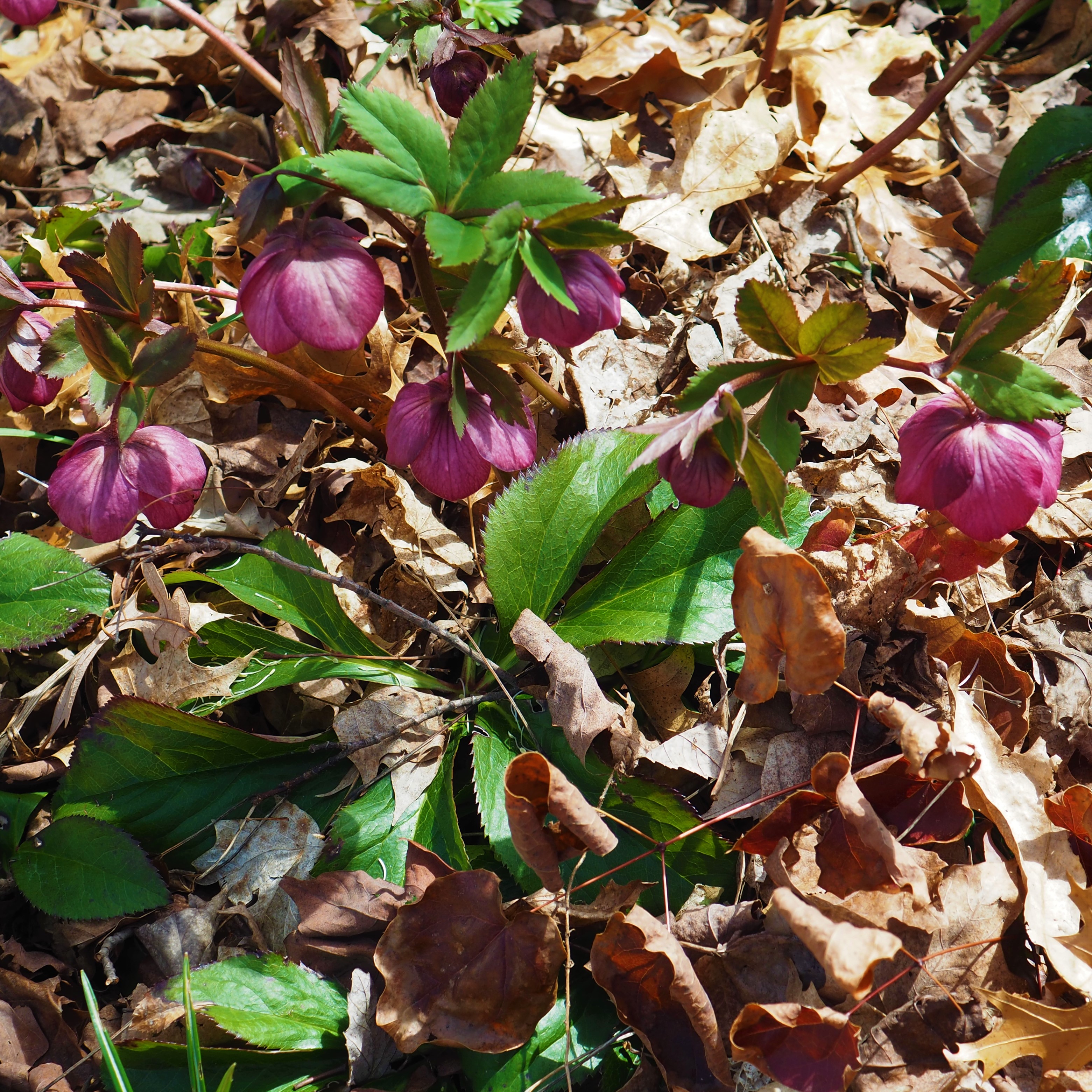
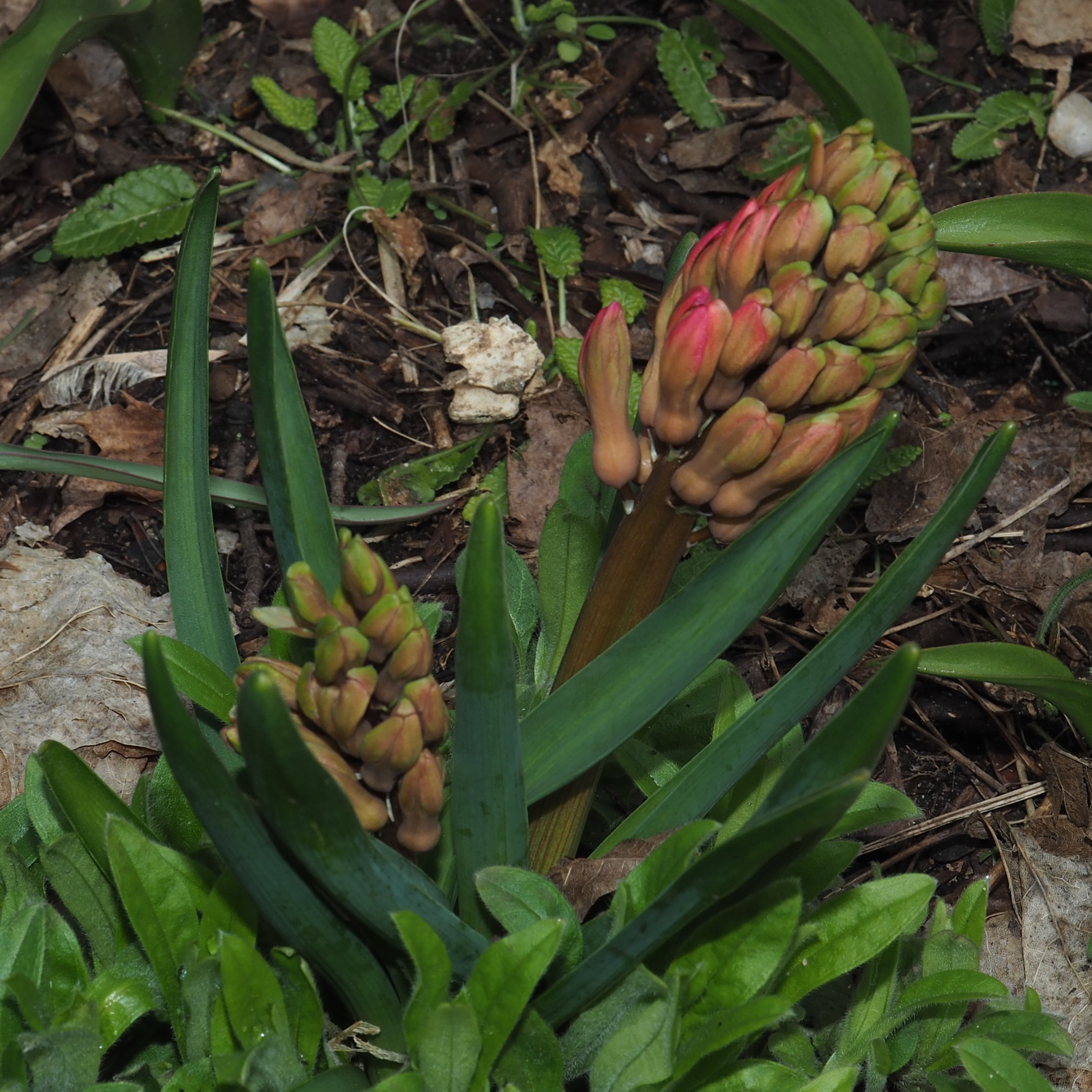
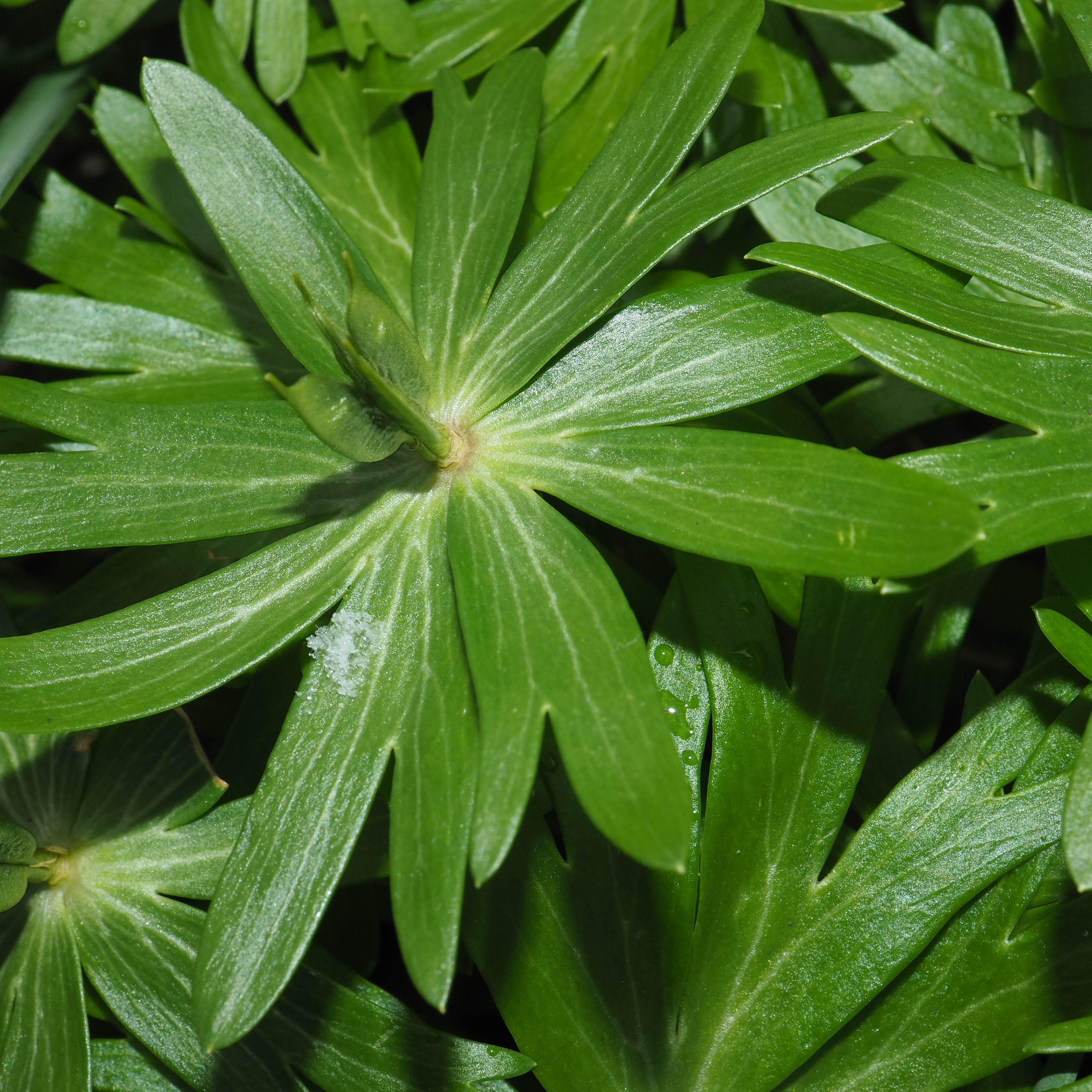
Spring is drawing closer! Wednesday afternoon showed a temperature of 20C (68F), and among other things (read on!) the purple Hellebore has gotten a great start in the front yard, and a pink Hyacinth out back. But Thursday it tried to snow - Witness the snow clump on the aconite leaf in picture 3.
Remember that there is information in the name of the file for each image. You can see it by mousing over the image - look at the lower left of the screen. Or you can click on the image to get to the (usually) larger image. Then the info is displayed in the address line above. Sometimes the second click will actually display a different view of the original image.
Ants continue to surprise me. All of these are members of the Camponotus genus (Carpenter and Sugar Ants). I wrote to iNat to ask if the one in pictures 2 and 3 was a pregnant female. I got the answer that yes, a female; not a queen. She's a worker who has just had a wonderful day of feeding. Wow!
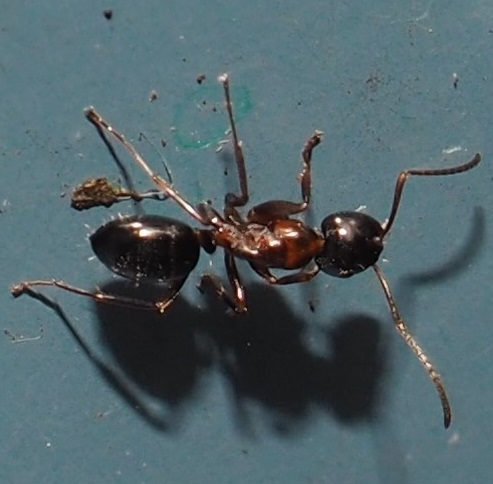


Well, there are still honey bees but they don't seem to be as infatuated (not so much as I am anyway) with the Squills, which are the most prominent of the little Springtime flowers. But picture 3 shows one that flew off the squills onto the ground. It's a tiny little bee and belongs to the subgenus Osmia. (By the way, speaking of bees, I'm thinking that it's almost time for the Nomad Bees to start showing up in the front yard.)
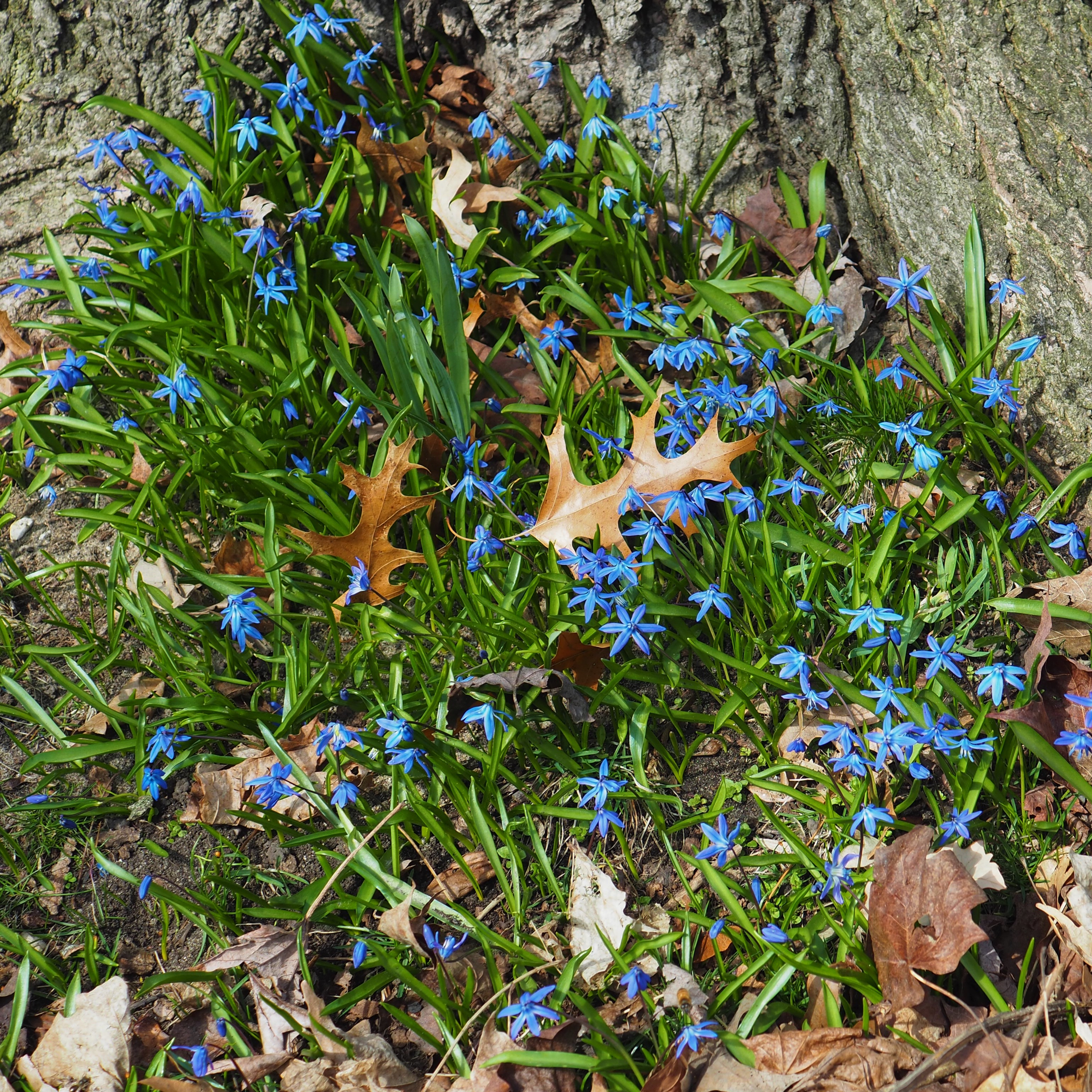
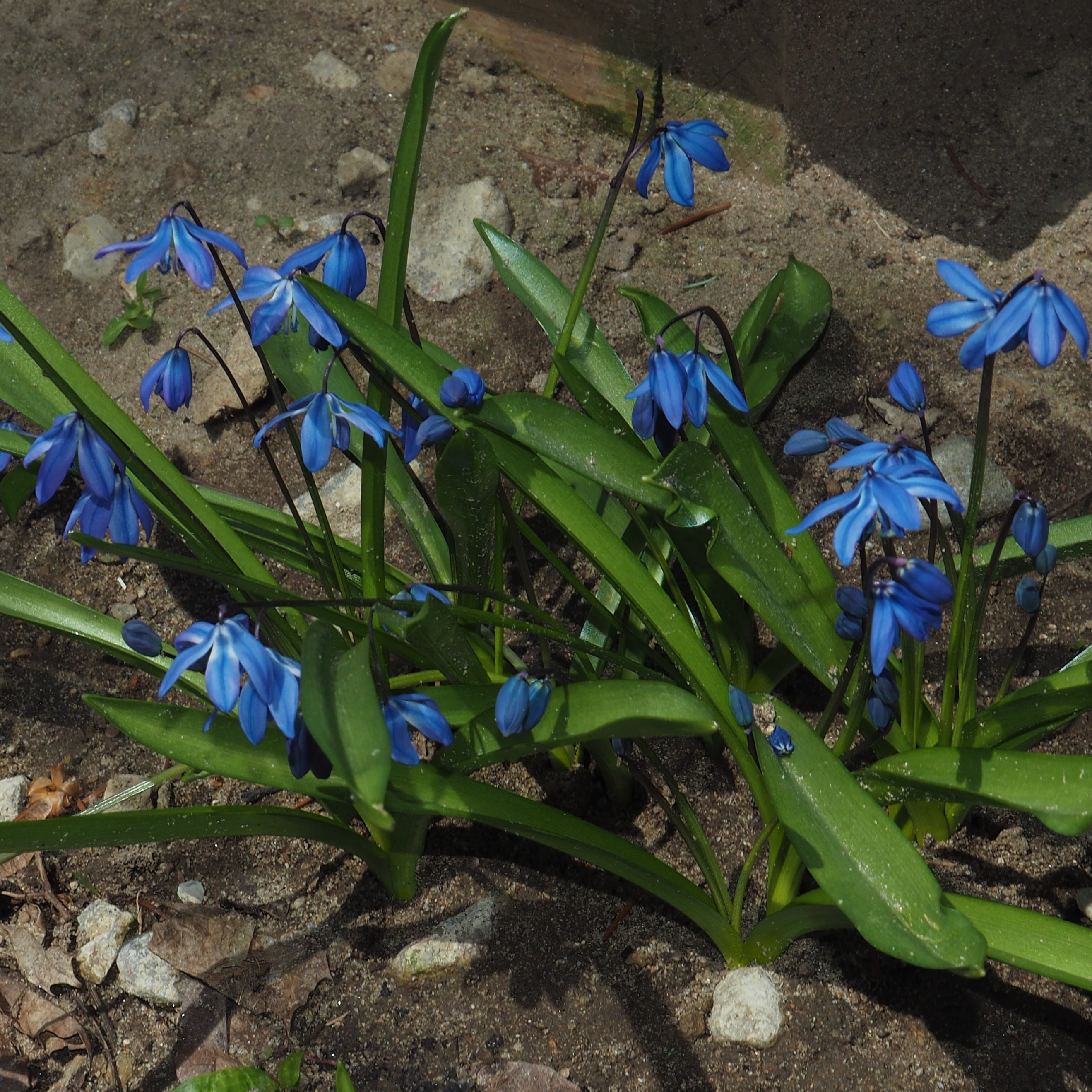

Bees weren't so much in season this week, but Beetles were. First is that Varied Carpet Beetle, still on my bedroom wall. Many of them are so tiny (some of them less than 1 mm long) they strain the good will of my macro lens. The last two are examples. No, I don't know if those are real white spots or bits of dust. :-)
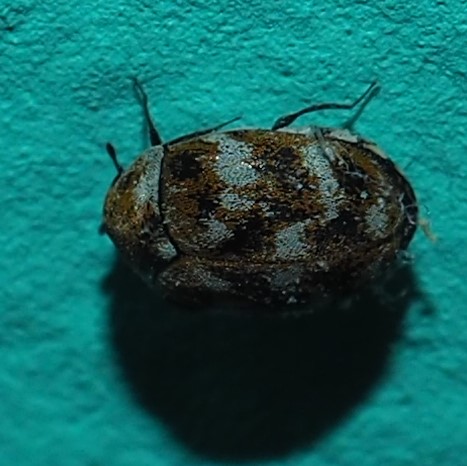
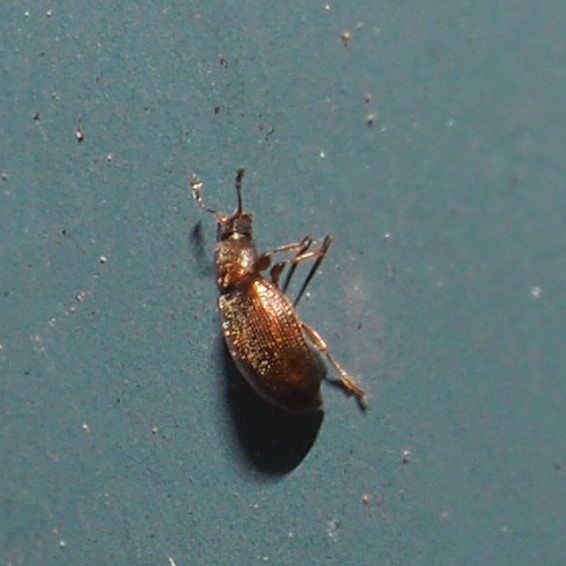

Some of the little beetles turn out to be weevils if you look closely enough. See the elongated snouts? The third one is a Redbud Bruchid, a kind of weevil that gets inside a Redbud pod (do you remember that the Redbud is an enormous Legume and so has pods for its baby beans?) to eat the seeds.
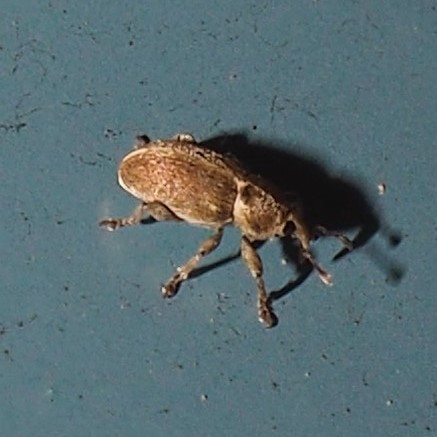
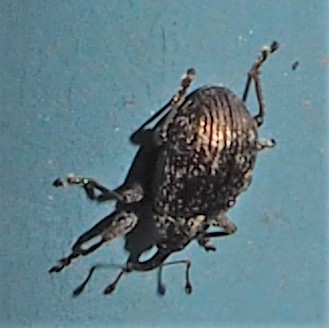

This subtly-patterned Beetle (first two pictures) is in the genus Omosita. (I now remember it from last year.) Third is a Sap-feeding Beetle of Family Nitidulidae. Funny how different it looks from the Sap-Feeding Beetle from last week (picture 4).
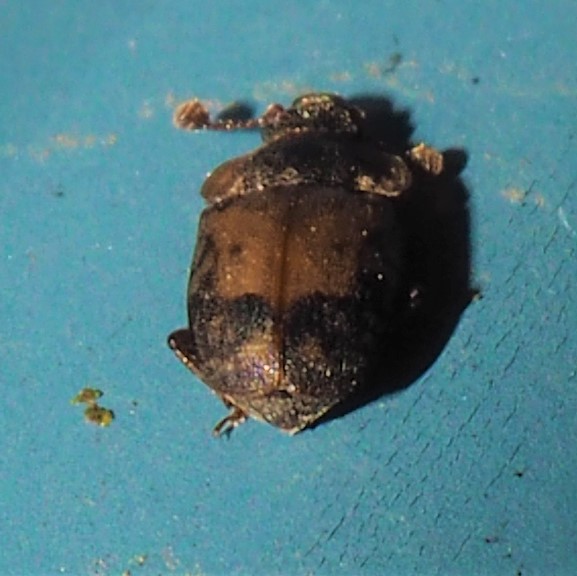
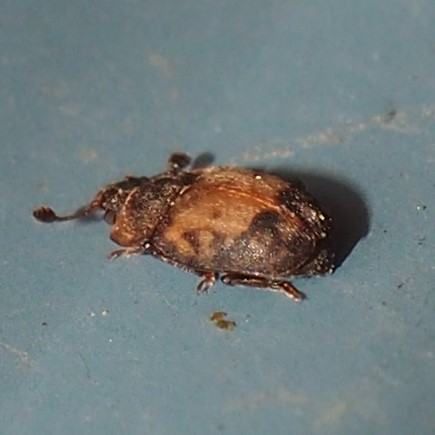
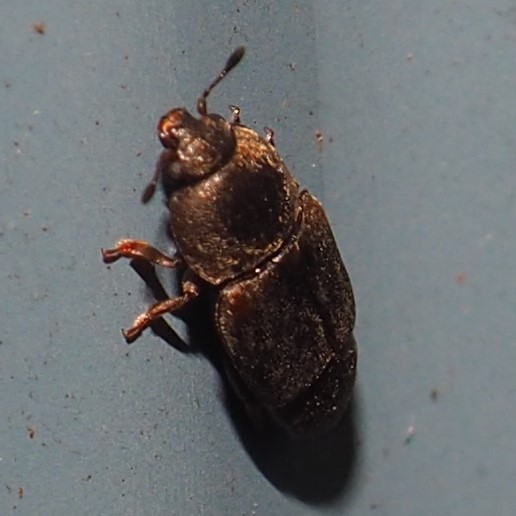
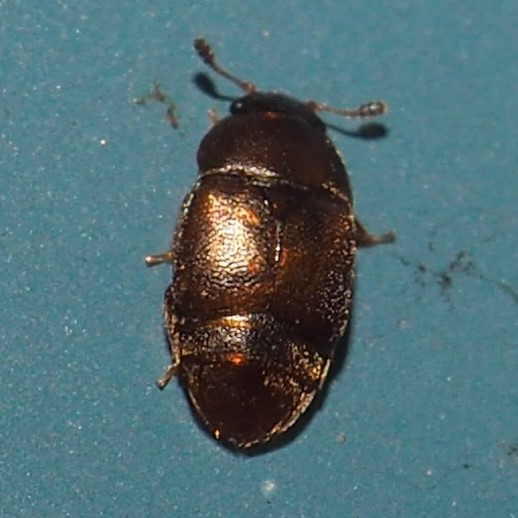
The glitziest Beetle this week was this Picnic Beetle (Glischrochilus fasciatus).
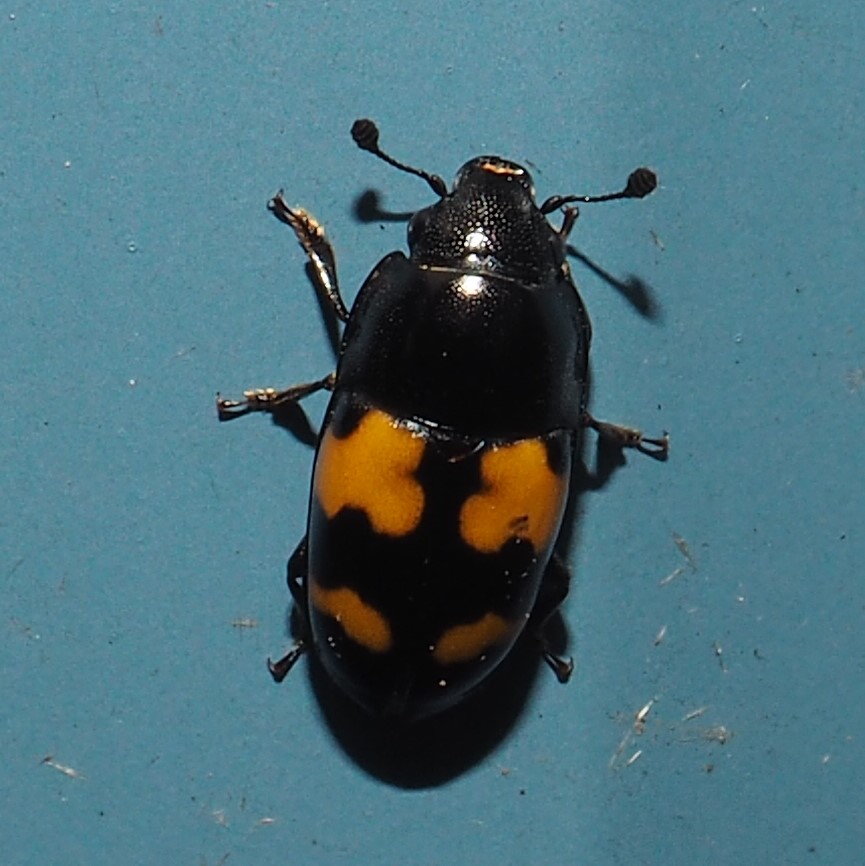
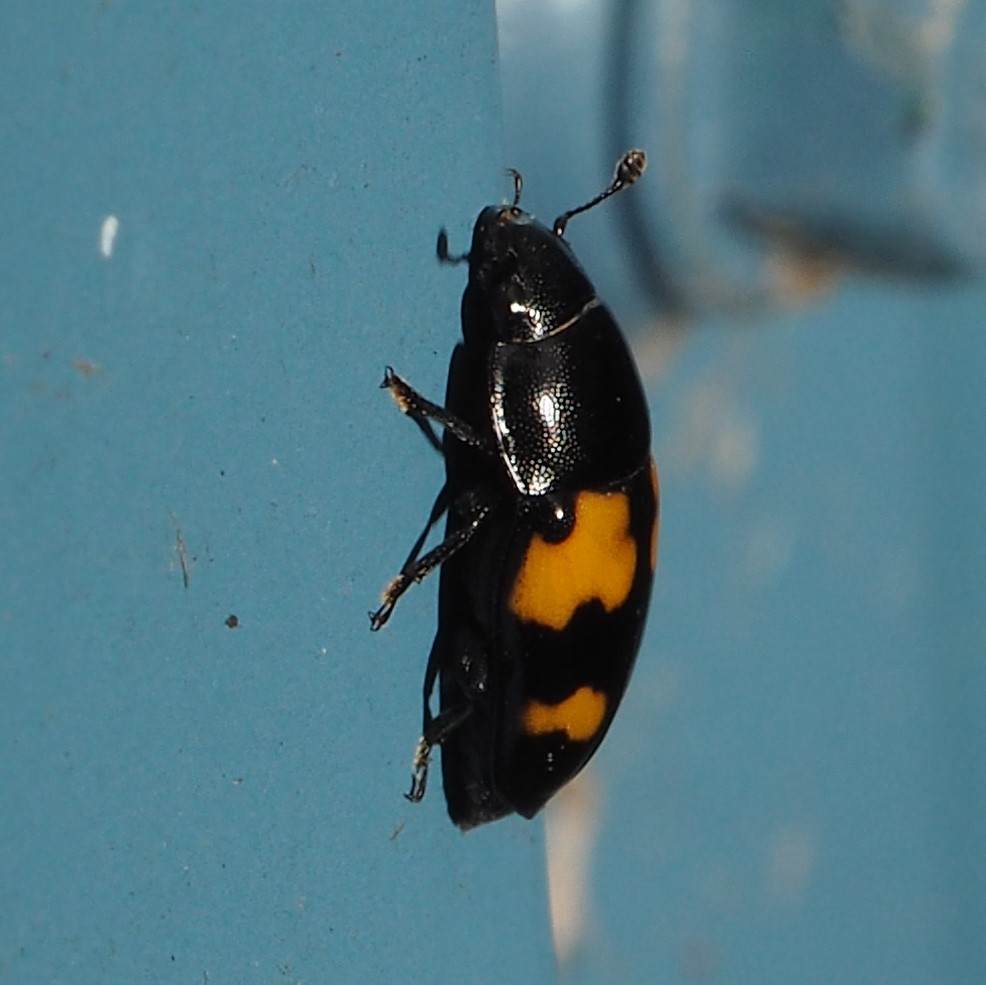
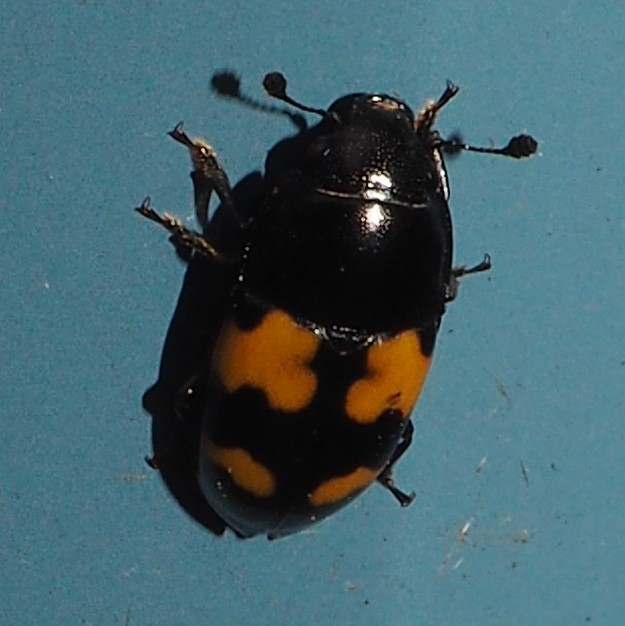
I THINK these three Rove Beetles are different species. Each one is a different individual. But one thing we can agree on is that this last one, a Puffball Beetle of genus Caenocara, is different from any Beetle I've ever seen - look at the little branch on its antenna.
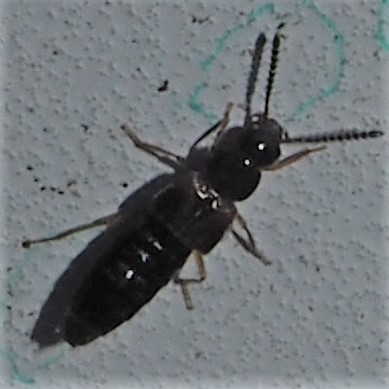
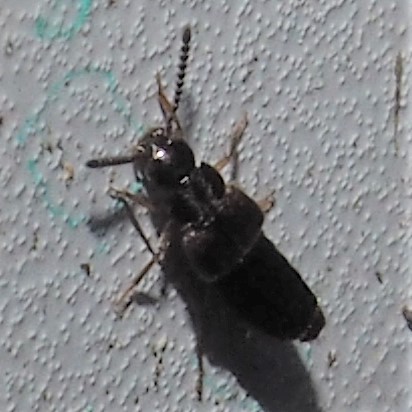
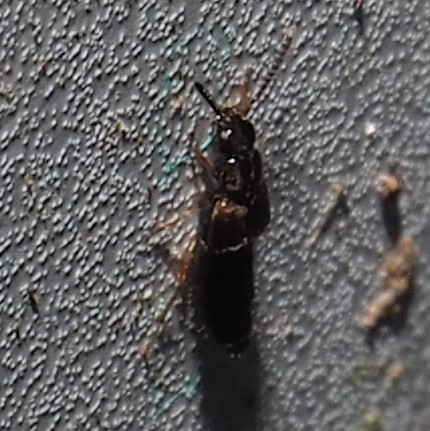

Here's another baby Assassin Bug, the grey-eyed one, Zelus tetracanthus - they're still coming out. The third picture shows (I think) one that leapt to the ground when it saw me coming.
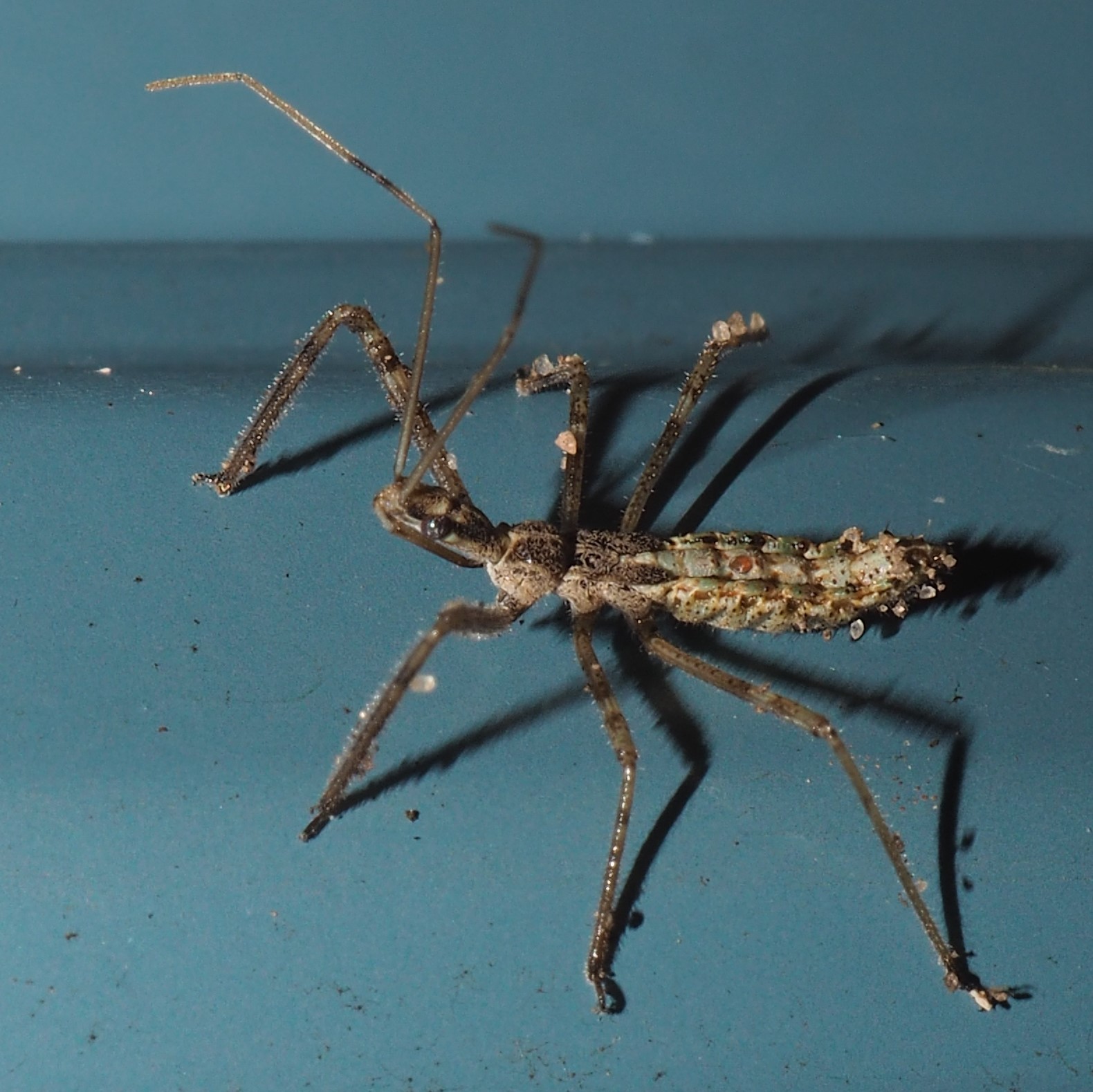
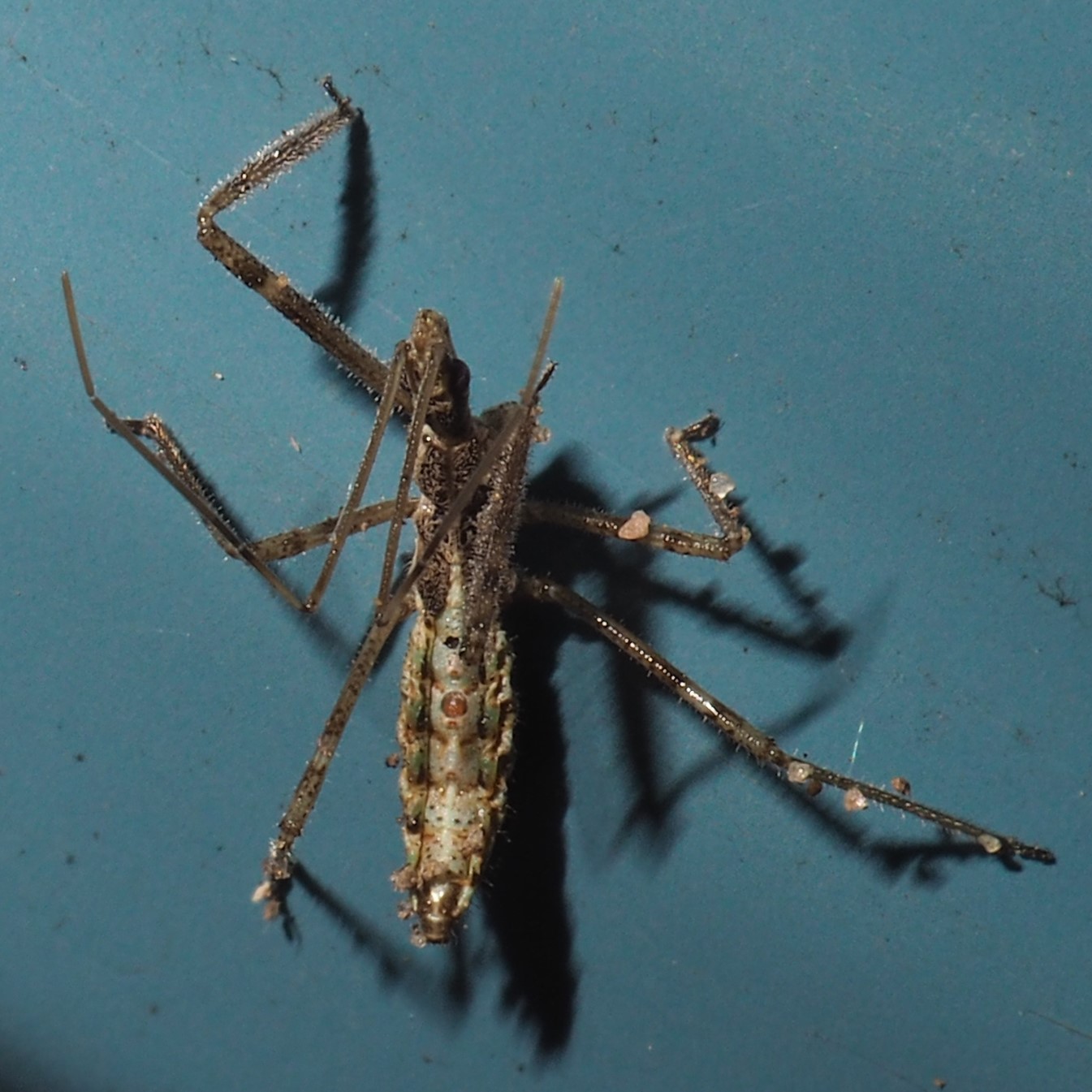

Here's that Spined Soldier Beetle (first two pictures). It still has the ability to fool me into thinking I'm looking at a Brown Marmorated Stink Bug. But that's the last one, taken indoors of course.
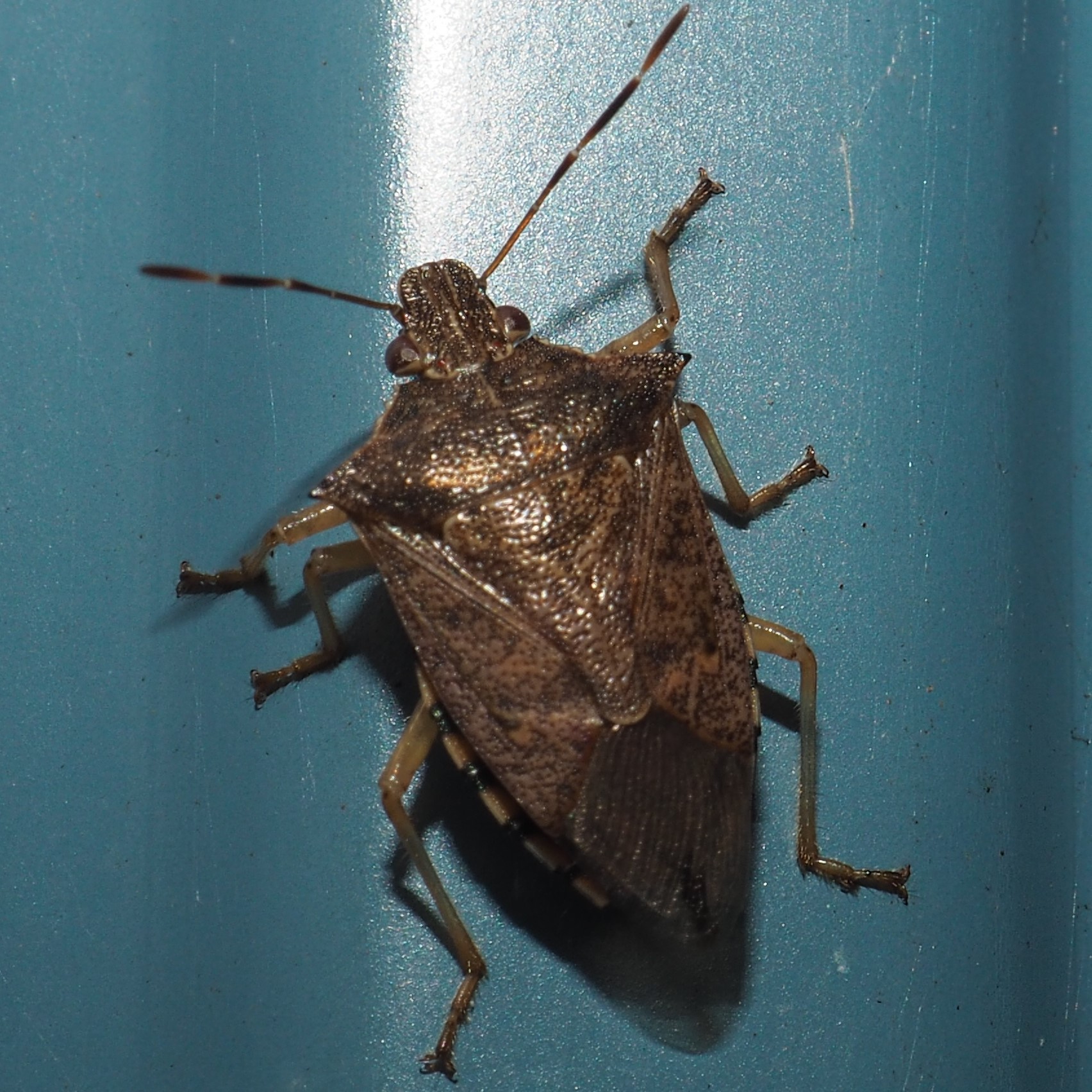
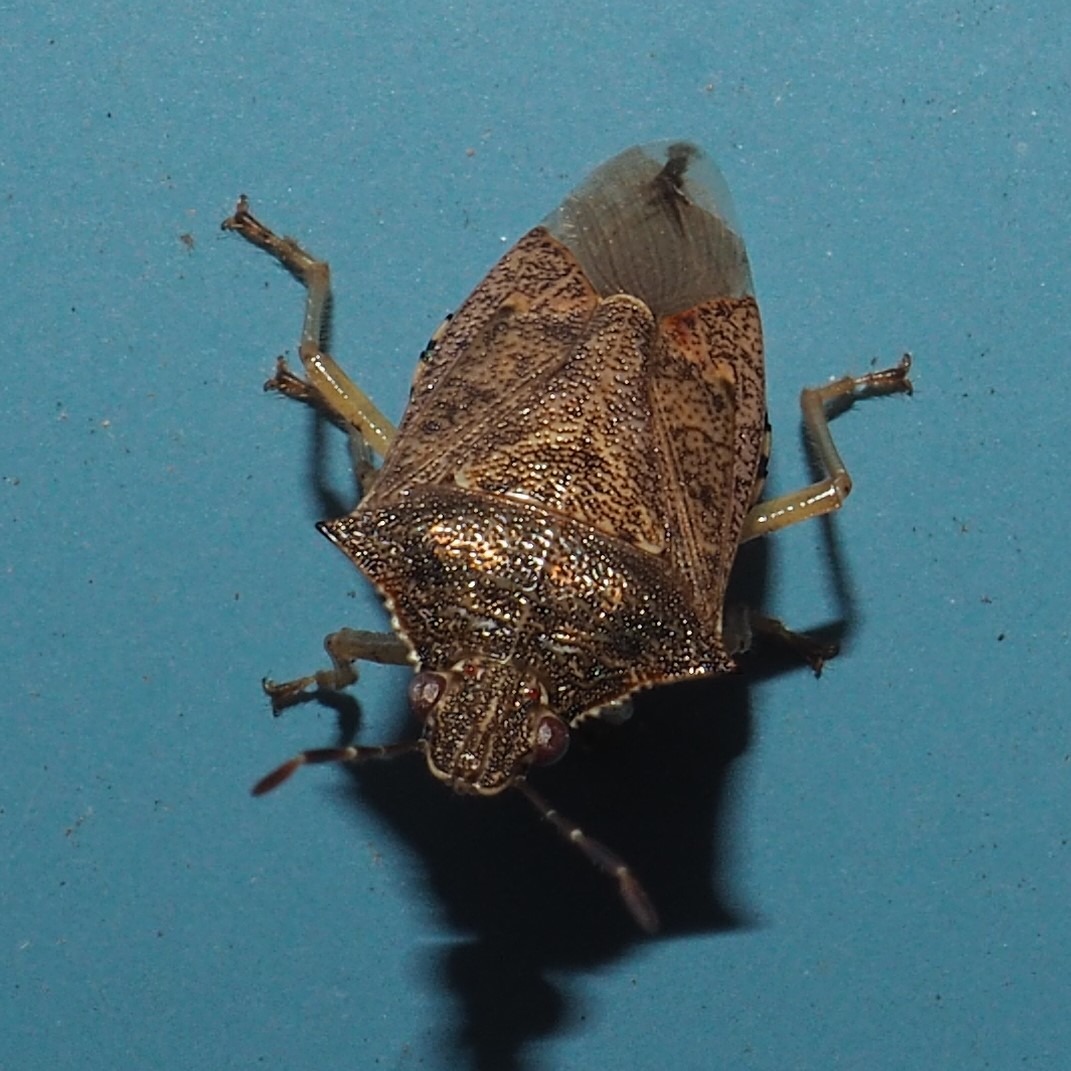
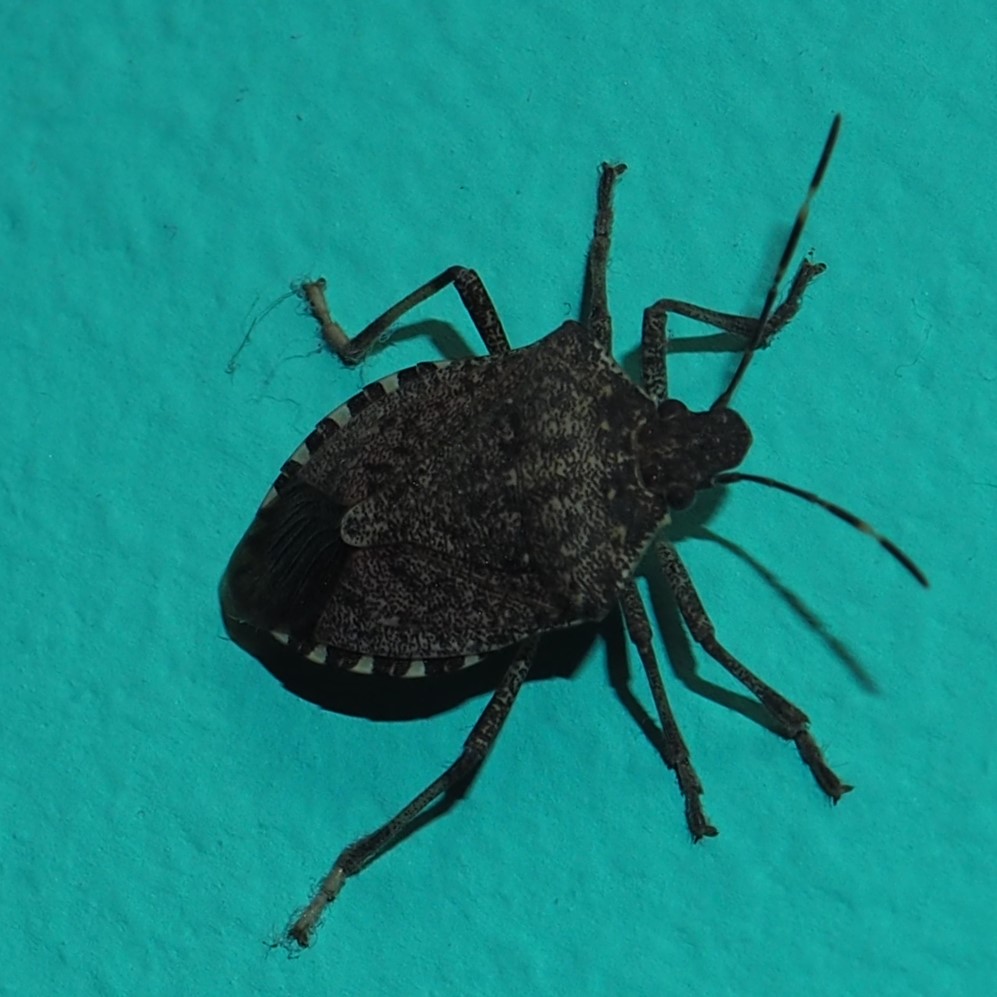
But the most intriguing of the Stink Bugs is this one, Banasa calva, which should have a common name but doesn't seem to. I love its colors but especially love the look on its face when it turns to face you down. Jean-Francois Roch of iNat identified this bug. Thanks Jean-Francois!
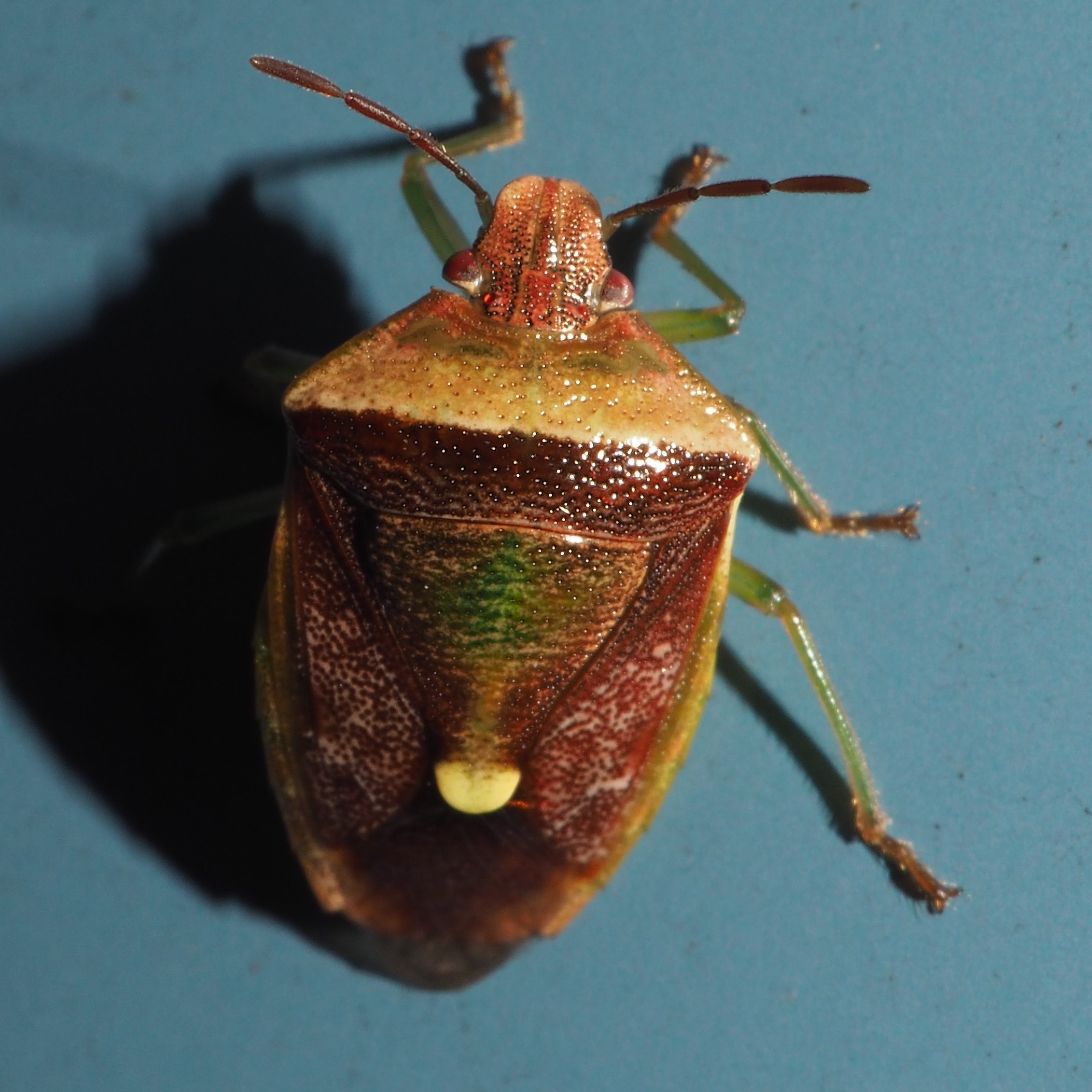
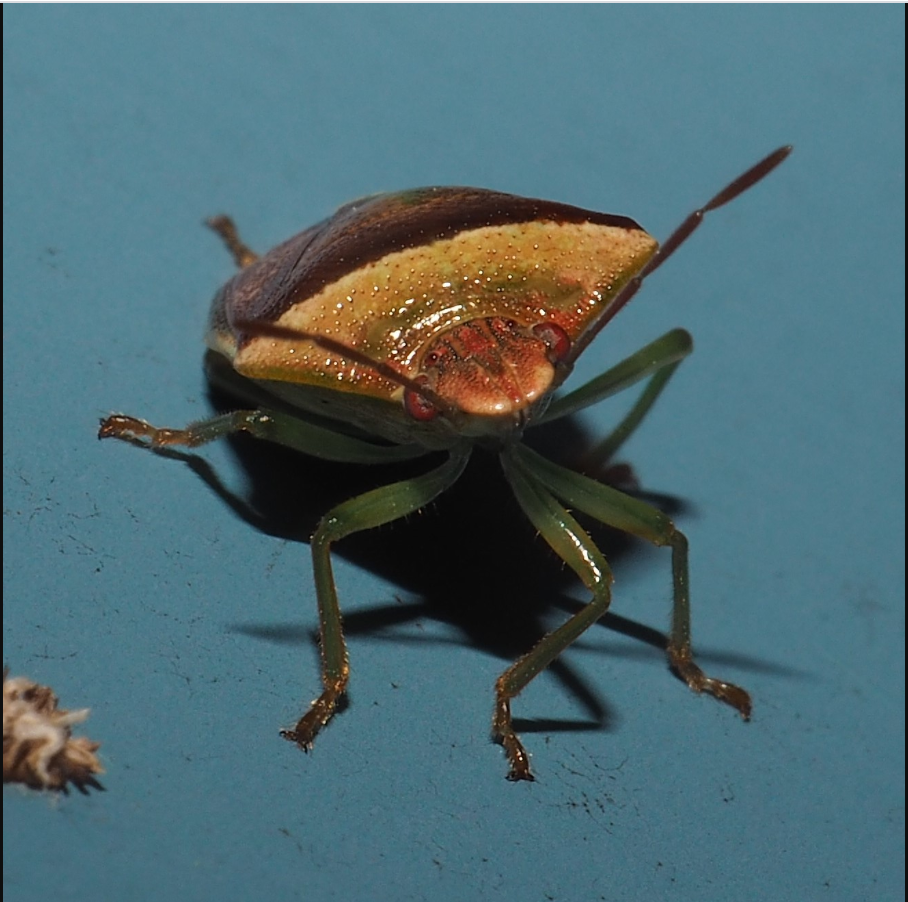

I don't suppose you can guess why this tiny bug is called a Stilt Bug, can you? Second and third were a new one last week (Minute Pirate Bug), but it or members of its family were all over the Wall this week.
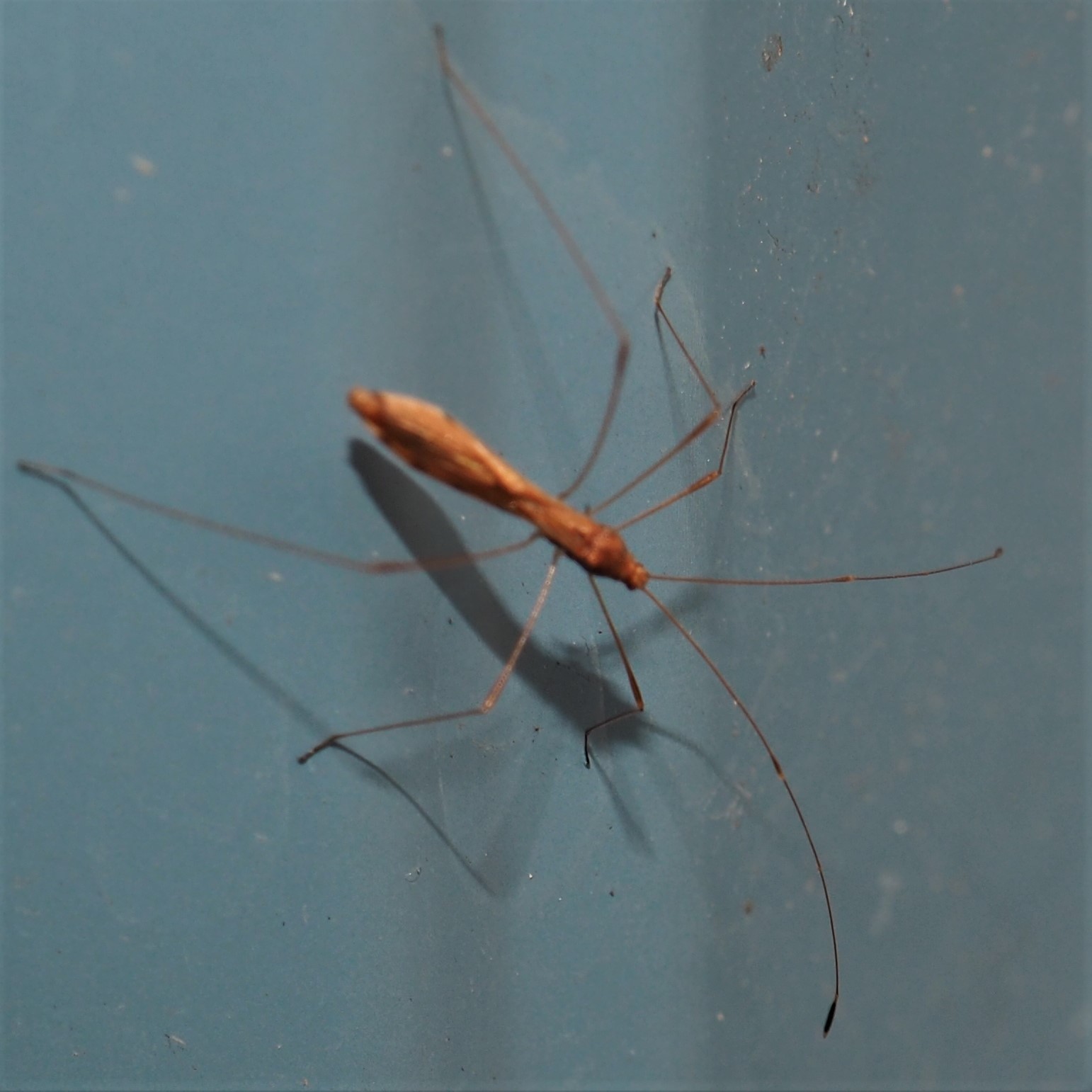
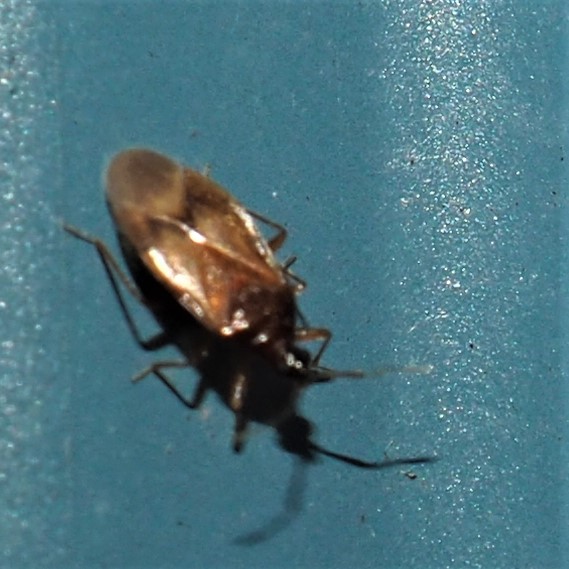
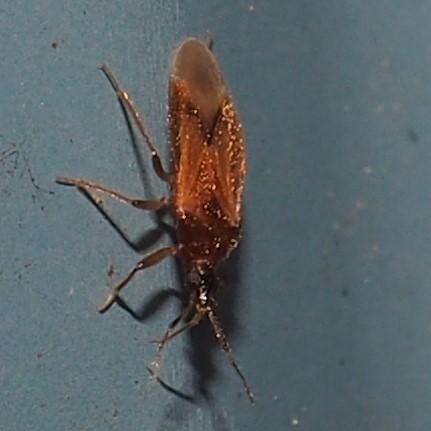
Now for the pieces of resistance, as they say in France. The Leafhoppers! They come in so many many colors and patterns. Even the genus Eratoneura are mostly red and white but the patterns give them away. These three are all Eratoneura and the first two MAY be the same species but I couldn't swear to it. The third one is called Eratoneura ardens because it looks as if it is burning or burnt.
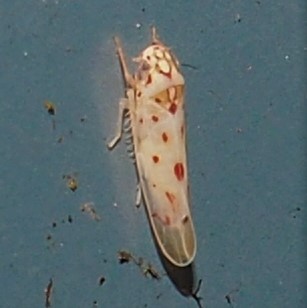
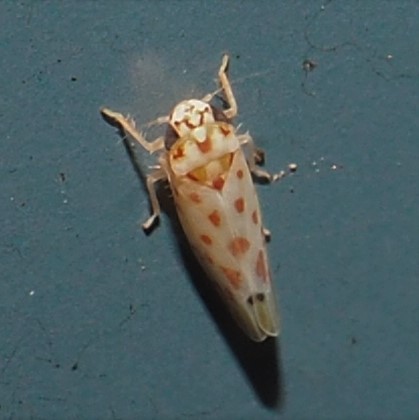
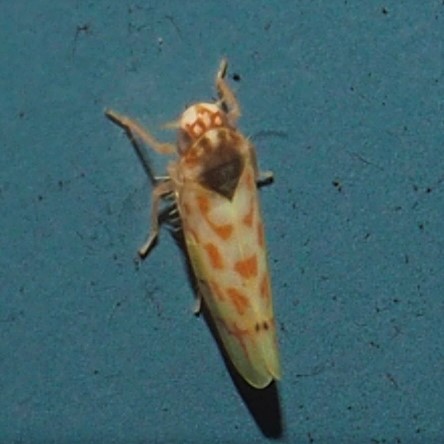
Here are a couple more Eratoneura leafhoppers!
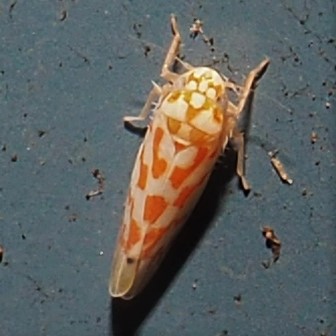
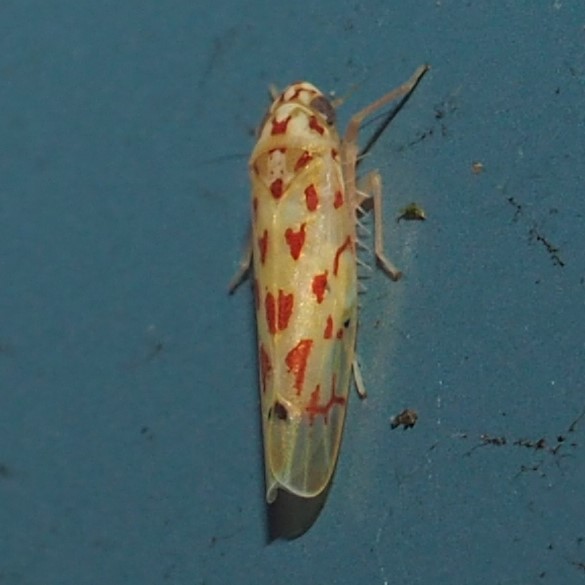
This simple pattern marks a genus called Erythridula, which used to be called Arboridia. The two are likely different species, but who knows? I'm enough of a novice to be able to say, Who Knows? How about the third one, called Erythroneura tricincta? If you ever took Erythromycin, you might know the name contains Erythro- (Greek for red) and Mycin (must be something to do with mold). So Erythroneura stands for Red Neurons (nerves). Maybe you can stretch your mind to think to yourself, Huh, Red Nerves? Might be plausible. Now (you are allowing me to pedanticize) what about the third one, Erythroneura tricincta? It seems to have had three belts (or cinches) superimposed on top of the Red Nerve pattern. Get it? Now your homework is to decipher "Erythridula". Have fun - you have a week!



Two more leafhoppers. The first is genus Balclutha, and we've seen a lot of it. Second and third are of one of my favorite and most frequent guests, Erasmoneura (I don't know what Erasmo- means so you are off the hook too.....) vulnerata. The second part probably refers to what might be seen as a big white scar on the wings.

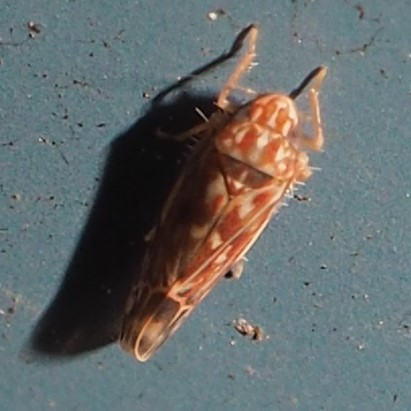
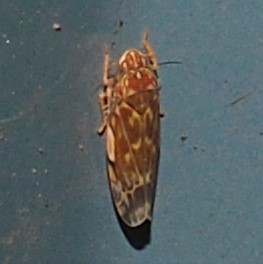
The fishes. On Wednesday, the it was so warm for the recent weather that I dangled an aquarium thermometer on a string into the pond and when it came up 20 C, that is, 68 F, I got out the can of fish food. (We're allowed to feed them if it's more than 55 F.) I have a game I play with them each year to see who remembers the little song, "here fishy fishy fishy (repeat ad nauseum)" before I put out some food. Since we haven't done this since about September or October, I didn't expect much. But all except for a few very young fish and two big red ones that a friend had put into the pond for winter safety suddenly stopped running away from me and started this way. When I was sure they were in position I shook a bit of fish food into the water. They remembered! You can see some young Water Lily leaves starting to rise from the floor. In picture 2, you see the leaf of the Magenta Water Lily unfurling itself.
A few moments into the frenzy, I saw rings in the other end of the pond and realized that the very top of something that looked like the head of a certain Green Frog had just come up. He didn't come all the way up but I could definitely see the shape of a very not-green frog down there under water. (They seem to burrow down into the muck at the bottom of the pond for the winter.) If this is really my old friend Froggy this marks the end of two winters spent down there. He first appeared at the pond in the late summer of 2018. Here he is lightened up a bit so you can see his outline better!
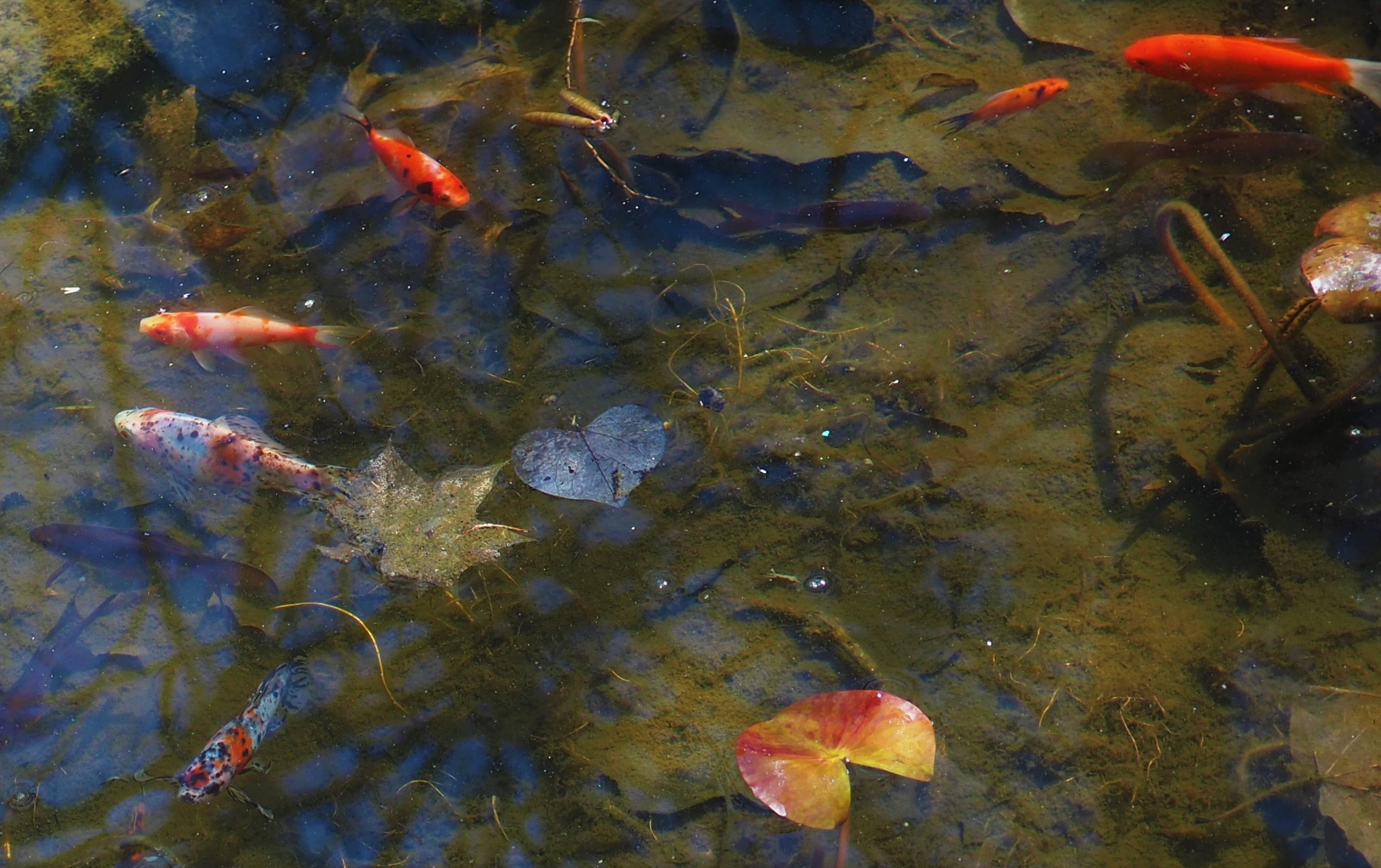
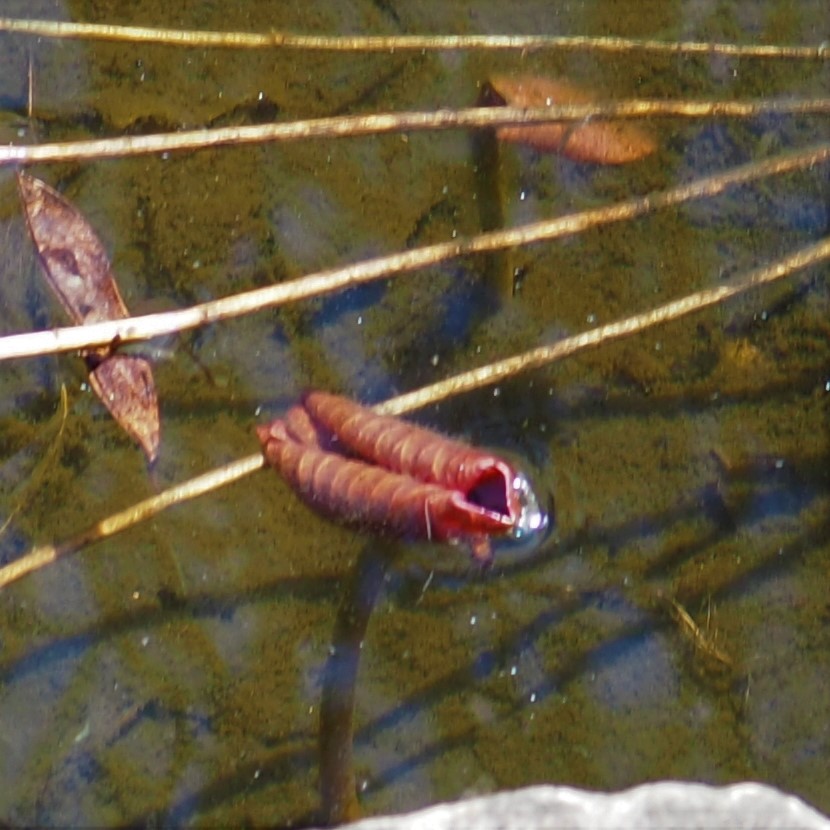
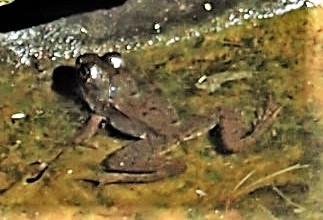
Here is a fly that I haven't gotten confirmed yet, but I believe it is Suillia quinquepunctata, a 5-spotted dung fly. Third is another mystery, one which looks so much like a lot of other flies!
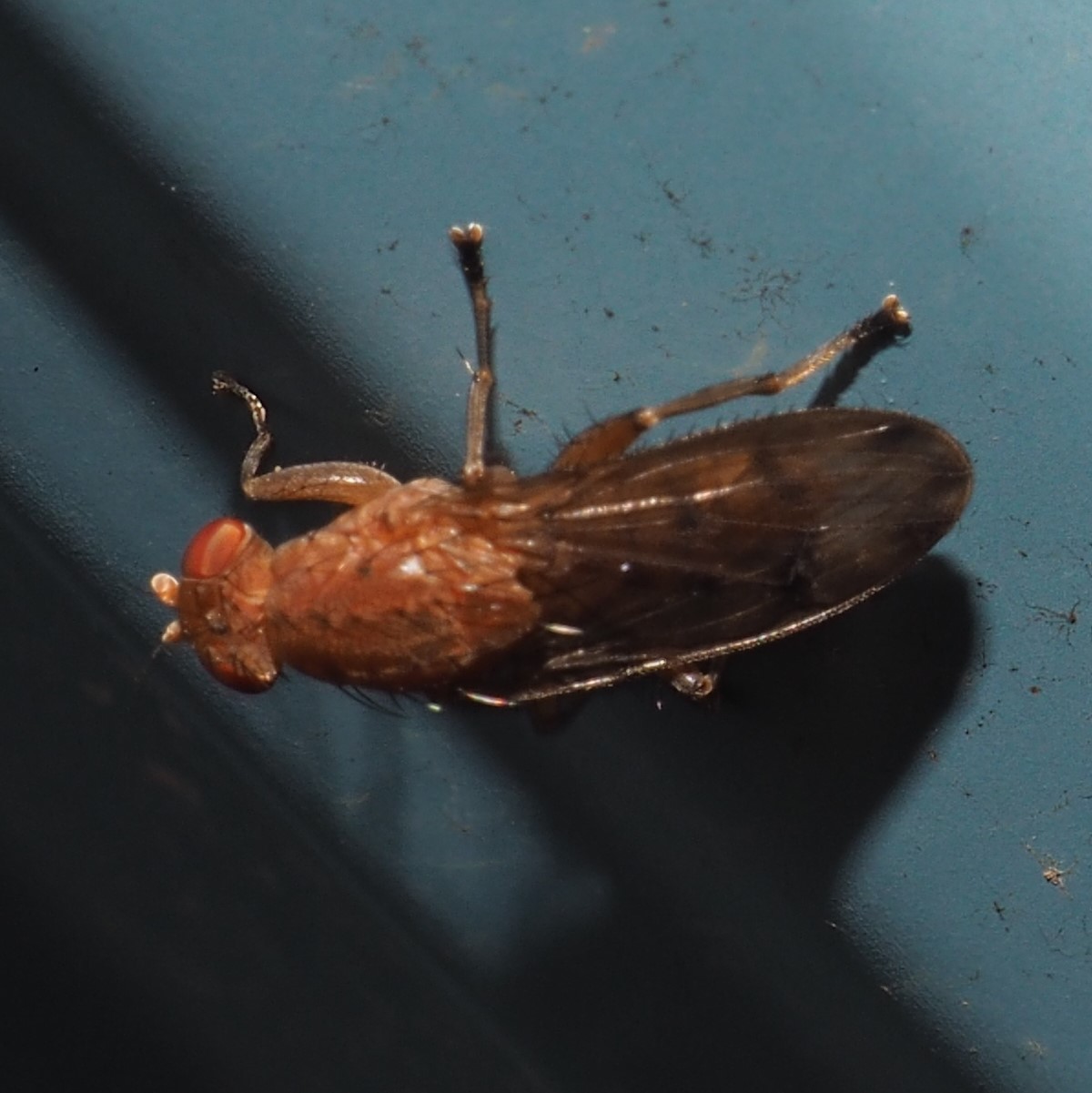
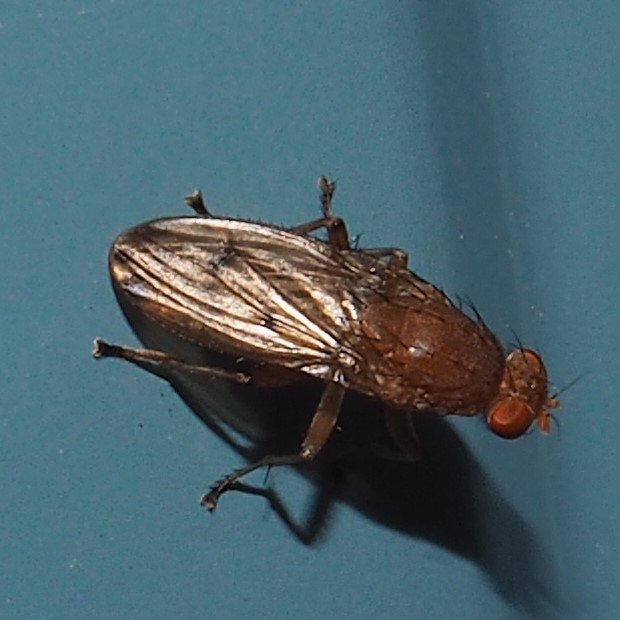
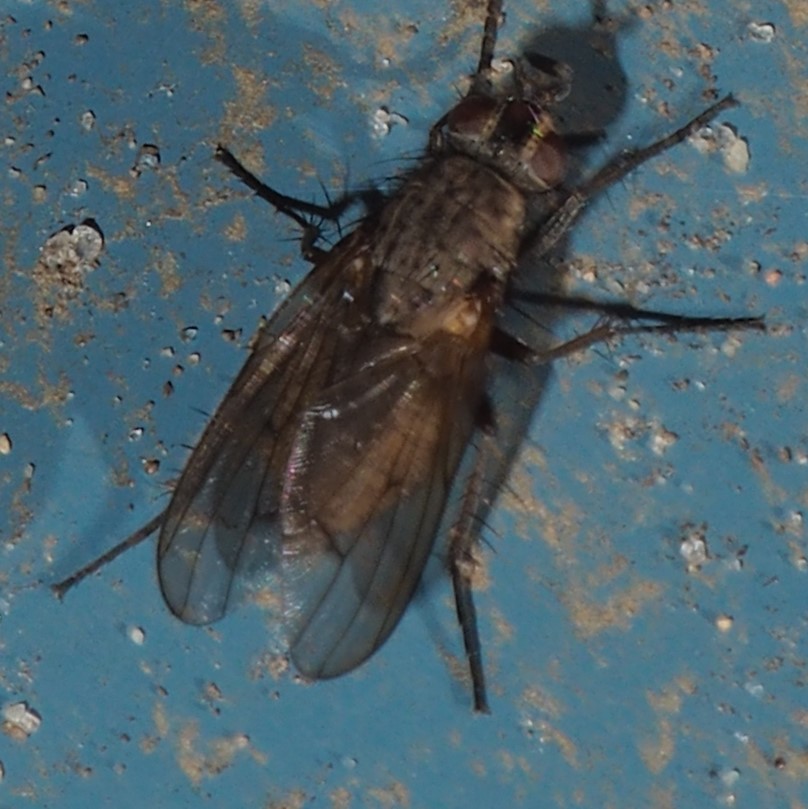
Here's another fly that looks like so many other flies.
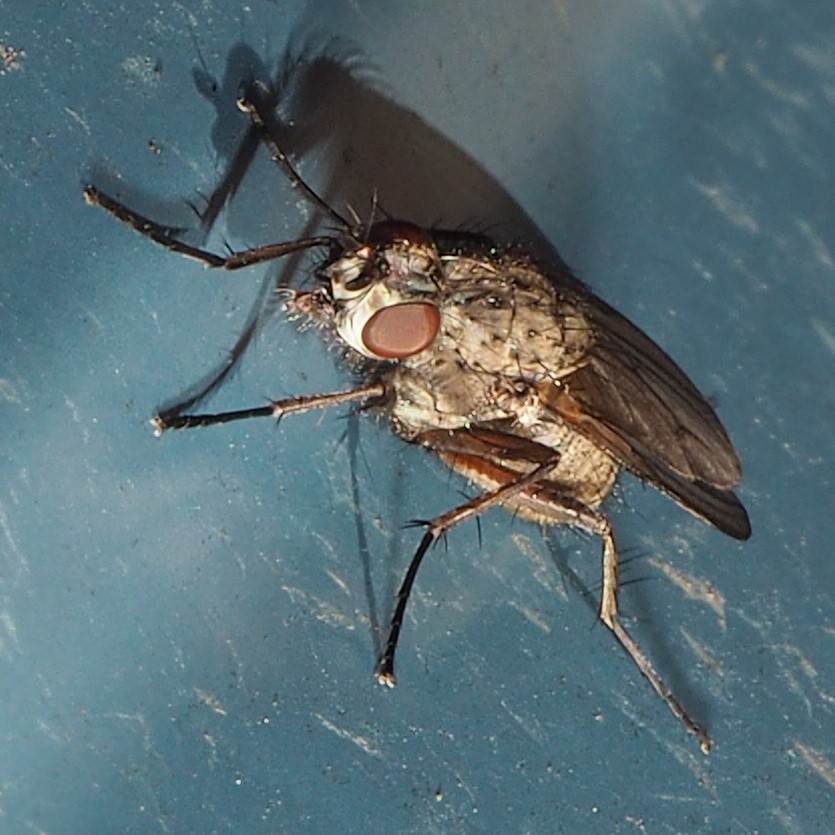

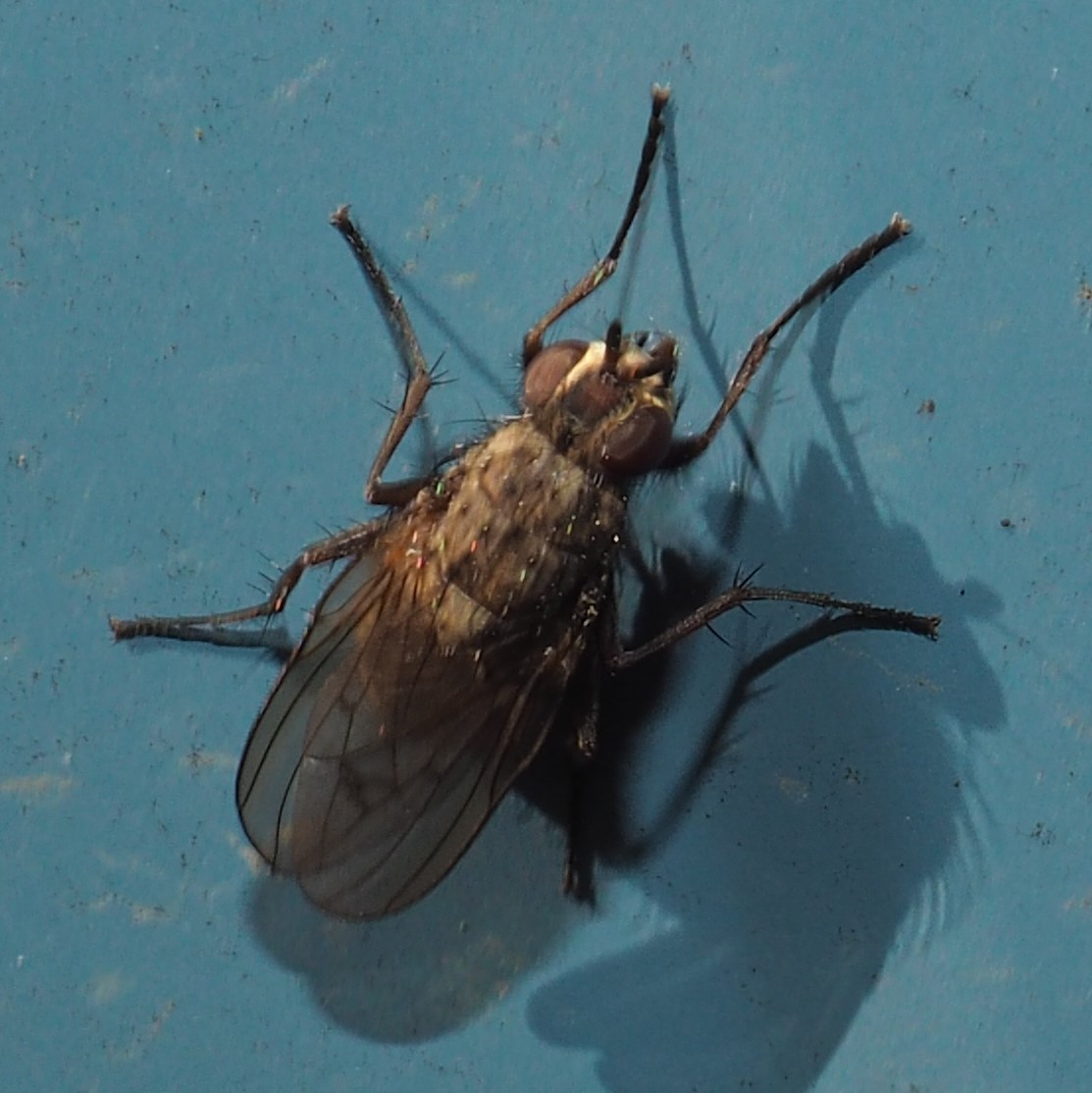
Here are a typical Gall Midge (going by the funky antennae), Fungus Gnat (going by the spiky knees), and Midge (going by a hunch). It's interesting that we actually saw so few flies, whereas they usually take up many rows.
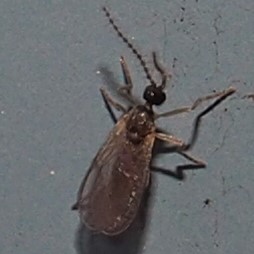
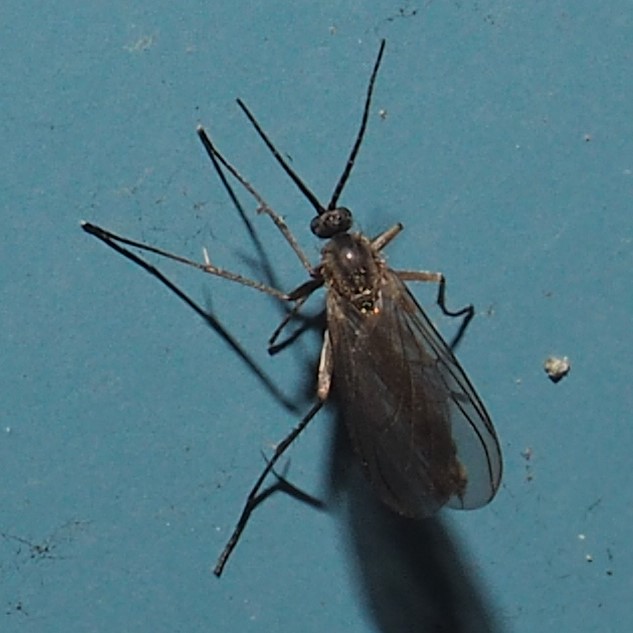
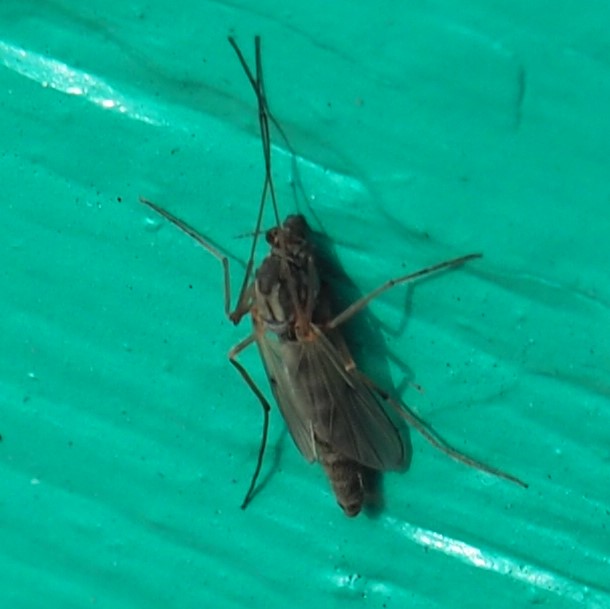
Here is a tiny Fly that I always get confused with the tiny Encyrtid Wasps.
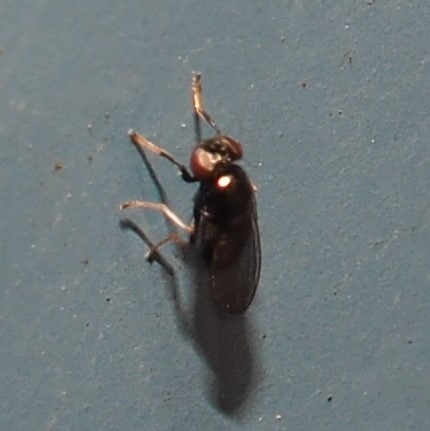
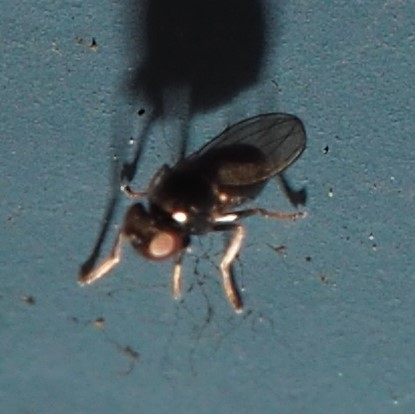
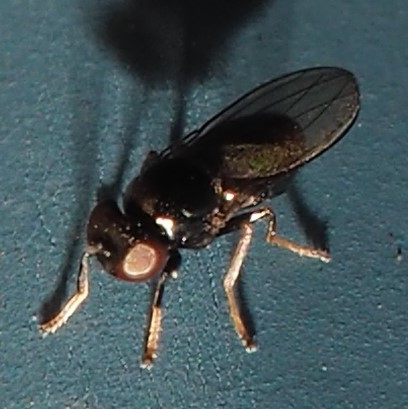
I've been watching the grape hyacinths for quite a while, watching them bud up very slowly. But today they were glorious. Second is a special grape hyacinth - its flower is two-colored and its leaves are wide. Third is a pink hyacinth showing some increased color.

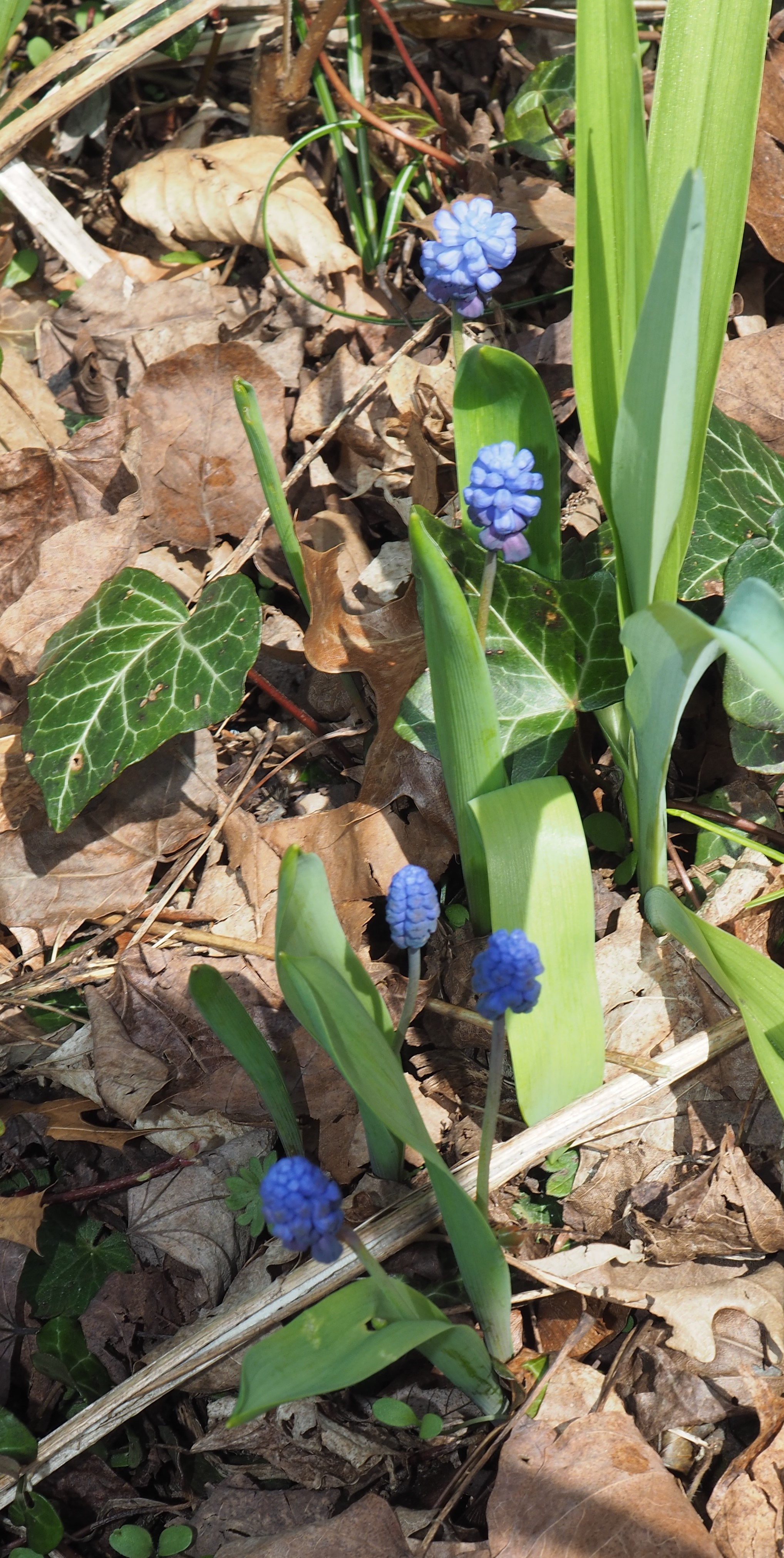
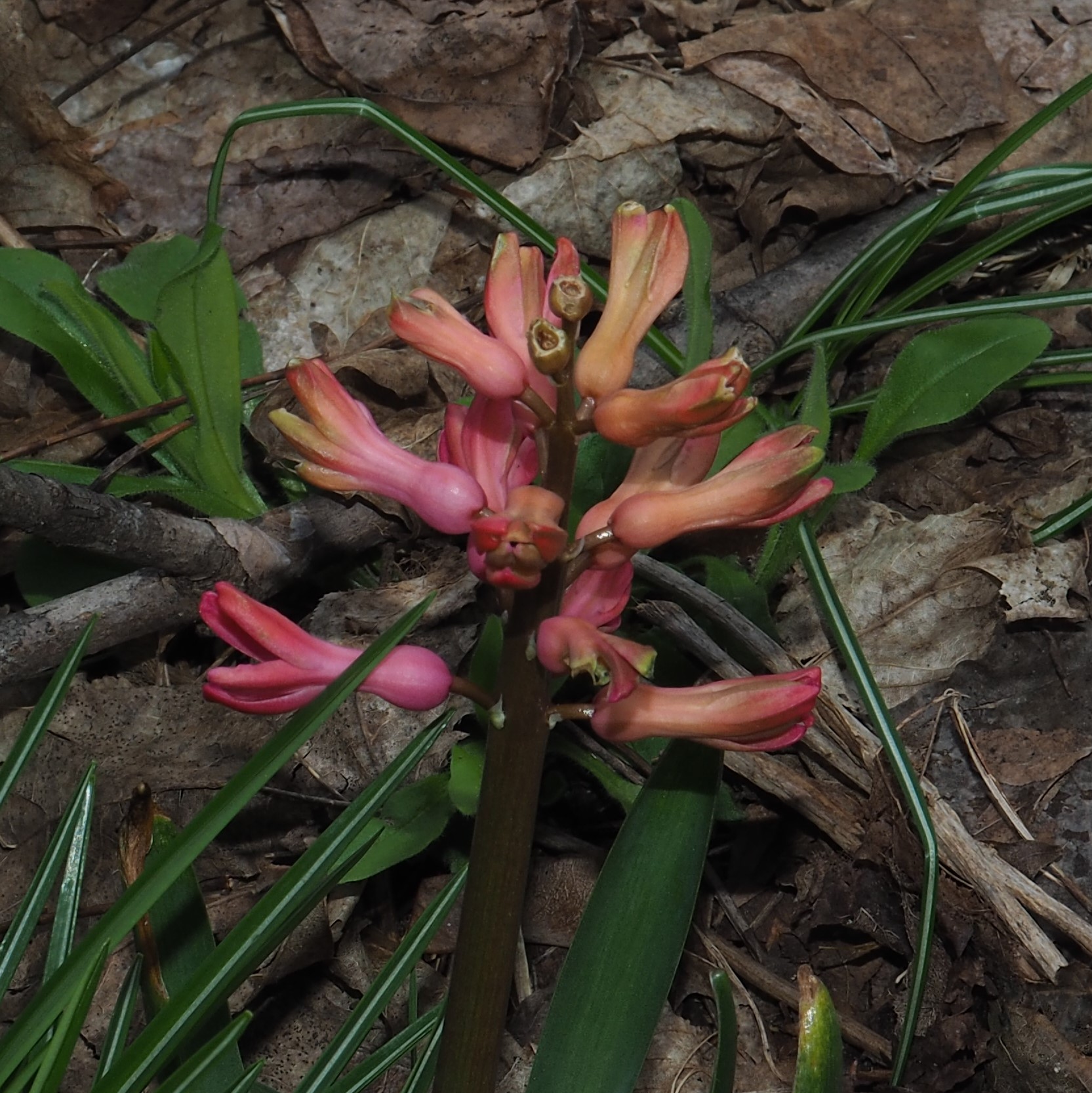
It's lovely to watch some of the native plants like this May Apple - it just popped out of the ground a few days ago. And this healthy-looking Bull Thistle may later be the home of a nice colony of Treehoppers. We'll see.
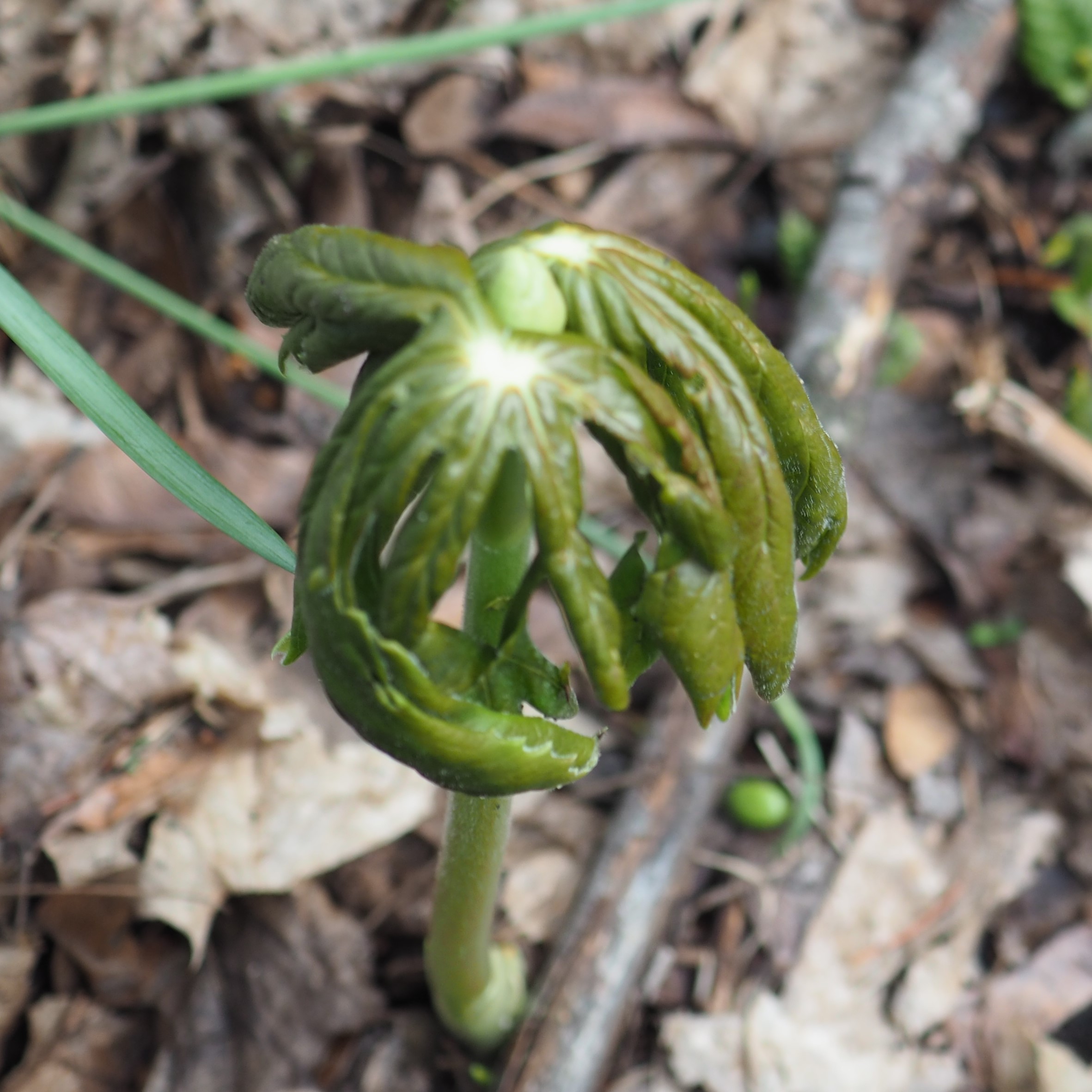
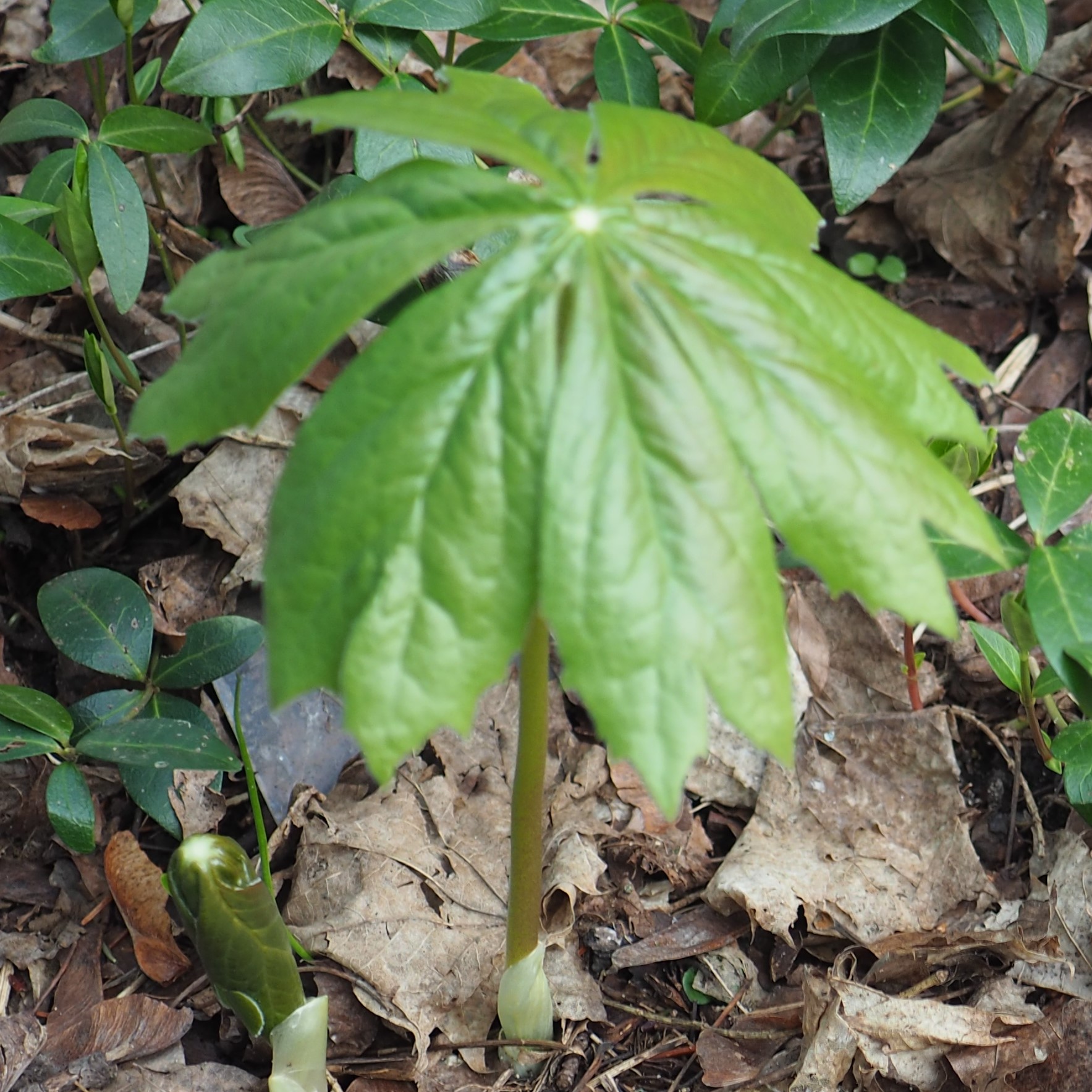
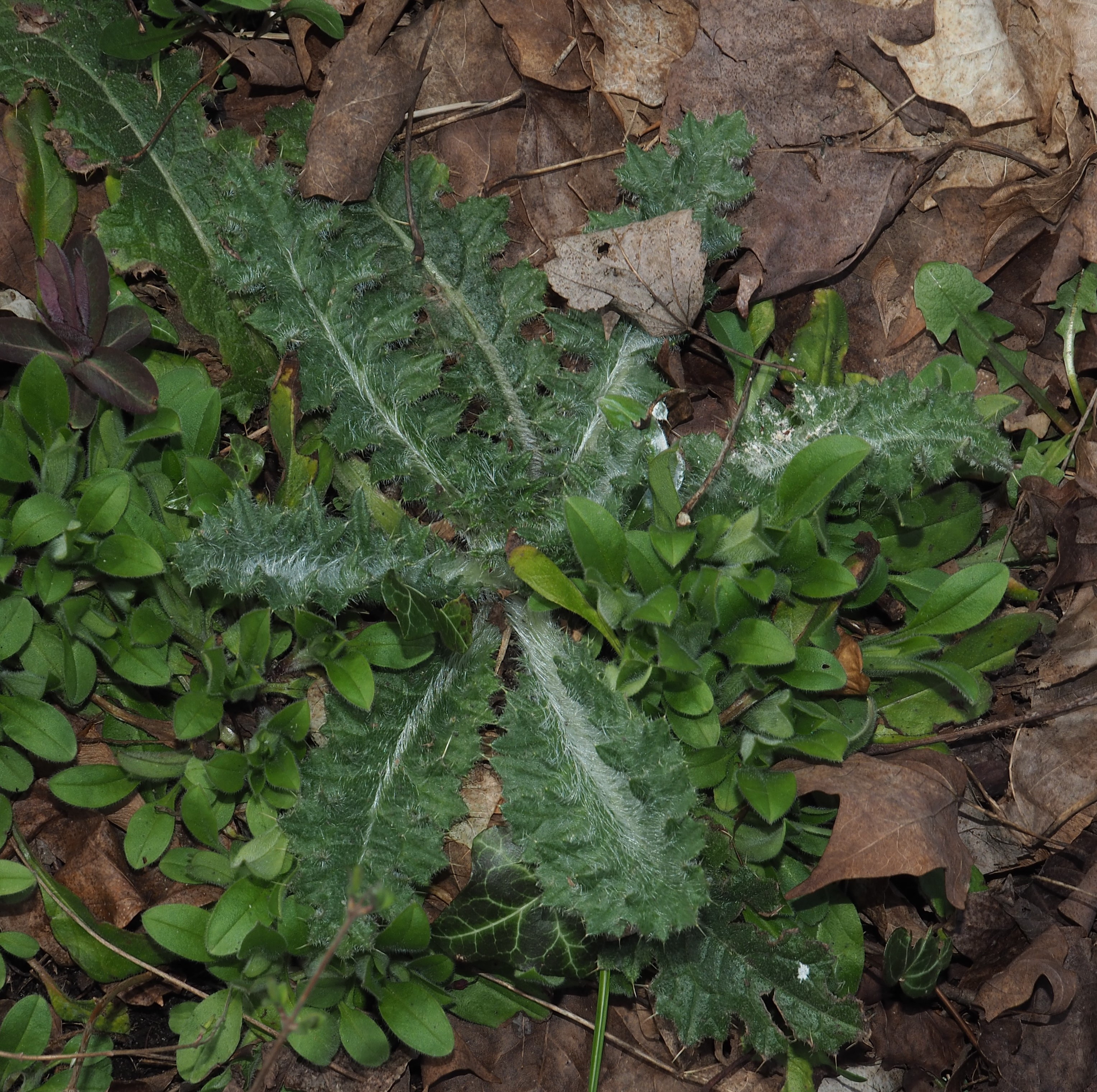
A few days ago, I was walking along the wall and noticed something jumping from the ground onto the wall itself. To my surprise, the jumper was this brownish Pillbug. I was so surprised. I mentioned this to my friend Sofia Cividini, who has written quite a bit on Isopods, the family that includes our cute Pillbugs, and she said that a friend of hers has written quite a bit about different modes of motion among the Isopods, and that there are indeed Jumpers! How about that! Next is a little Brown Lacewing who seems to be preening its antenna, much like a rabbit cleaning its ears! Third is a Looper doing nothing but looping along.
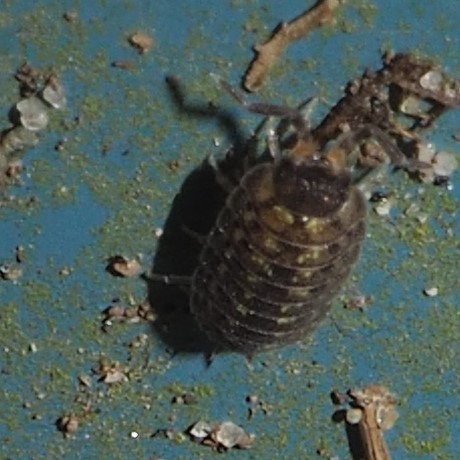
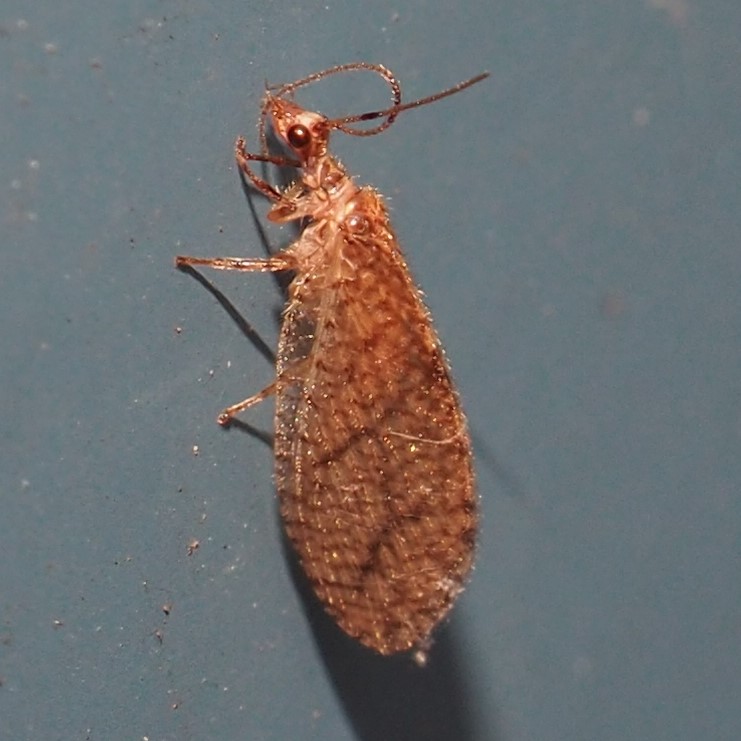
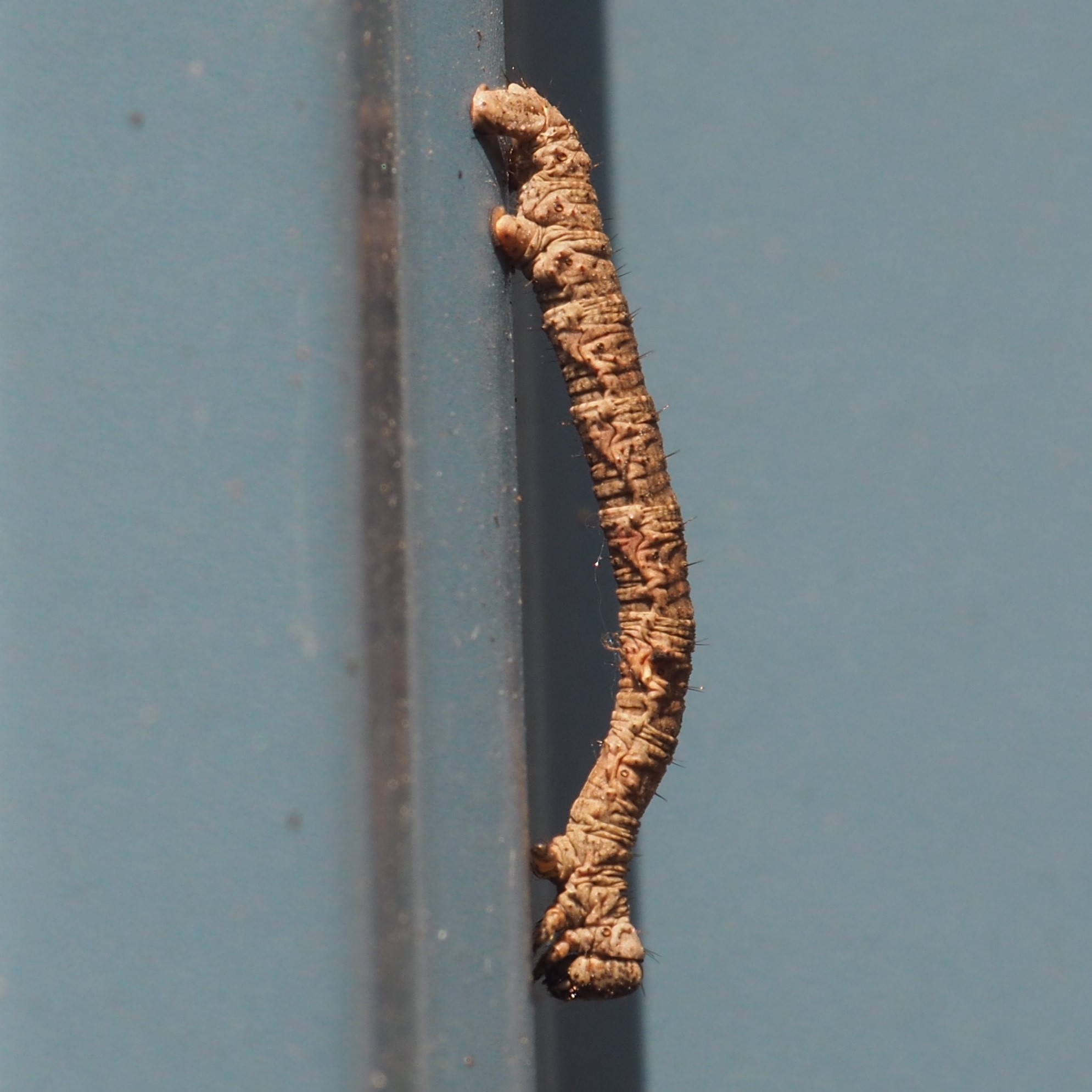
Another surprise. Today I was snapping what I thought was a spider with maybe an egg mass. But when I cropped it, I found that next to the "egg mass" were two tiny nymph-like creatures. Nymphs of what? I don't know. Perhaps someone on iNat will help me out with this!



Before I go to the Spiders, here are a few more mysteries. Are they plant-derived or animal? Maybe you can guess some of them.

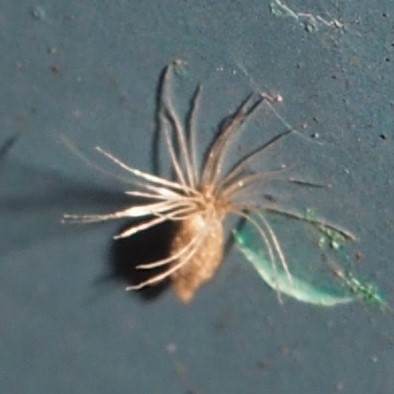

All right, all right. Here they are! The Common House Spiders were so Common this spring. It could be because there was such a quantity of prey out there. The middle one is wrangling a midge that looks so large compared to the spider. I especially like the view in which they seem to have a people nose.

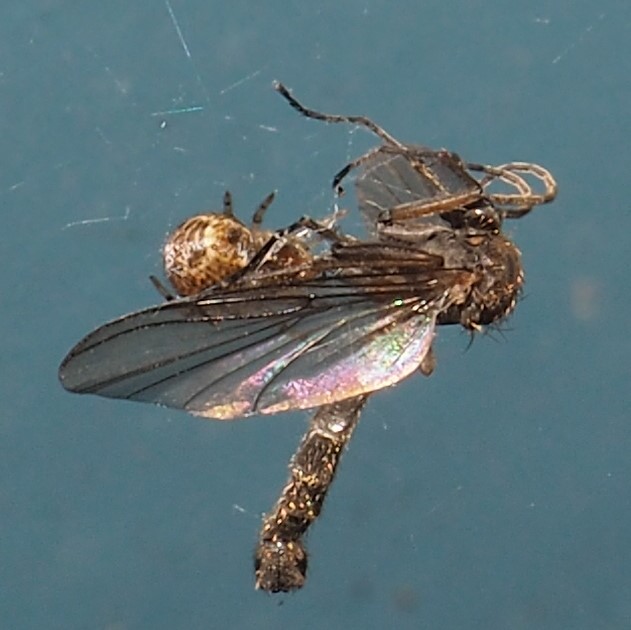
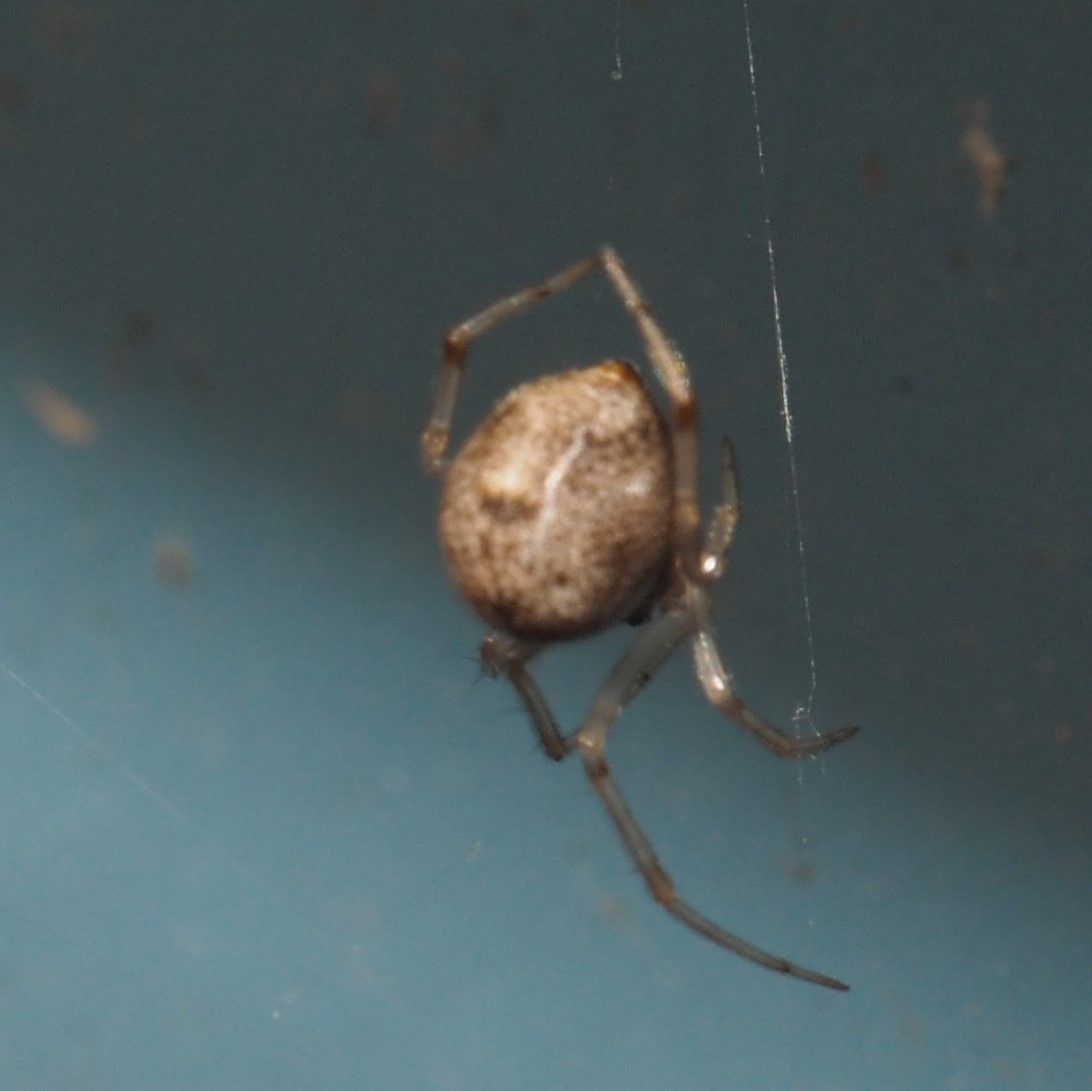
There were a few little round Cobweb Spiders. The third one is a Social Cobwebber (genus Theridion).
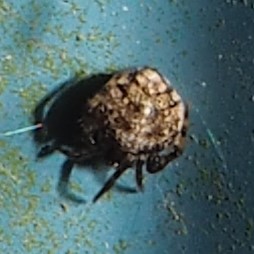
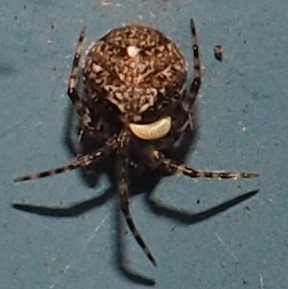
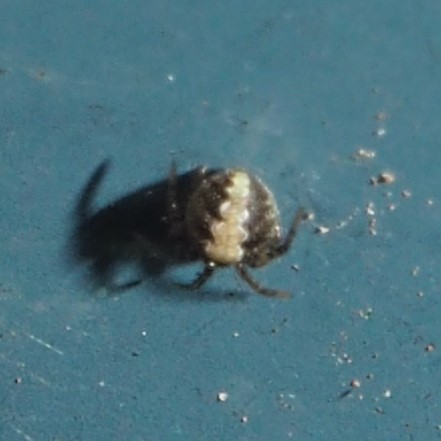
There was a husky Bassaniana Crab Spider out there for a few days. I always forget that you can practically always spot one by its heart-shaped head segment.
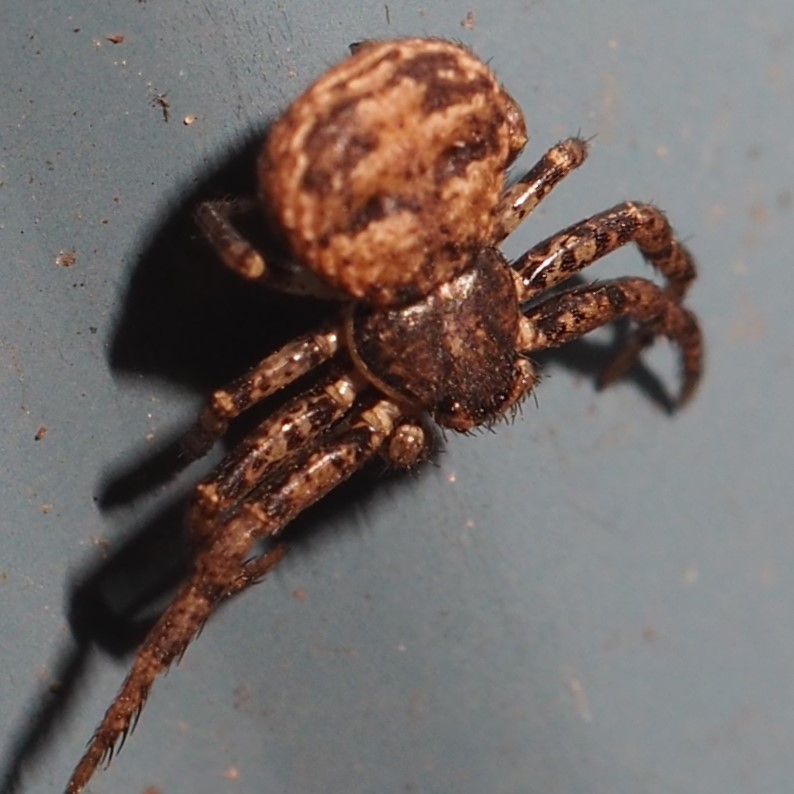
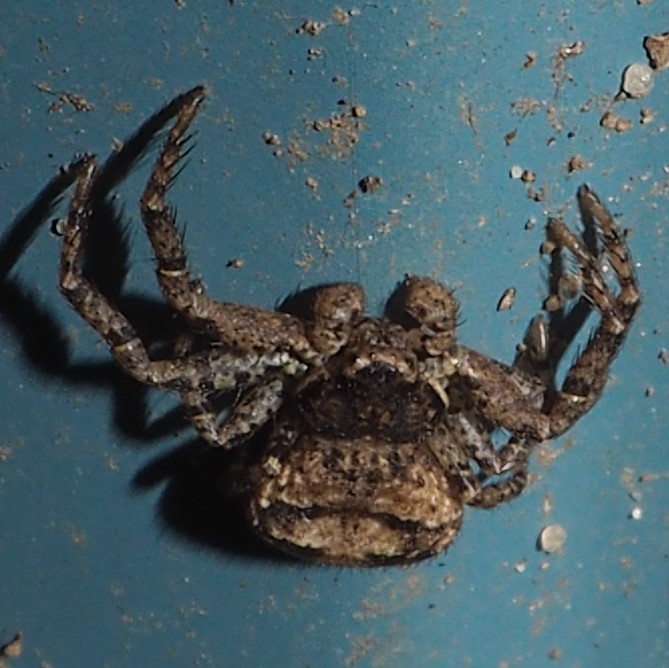
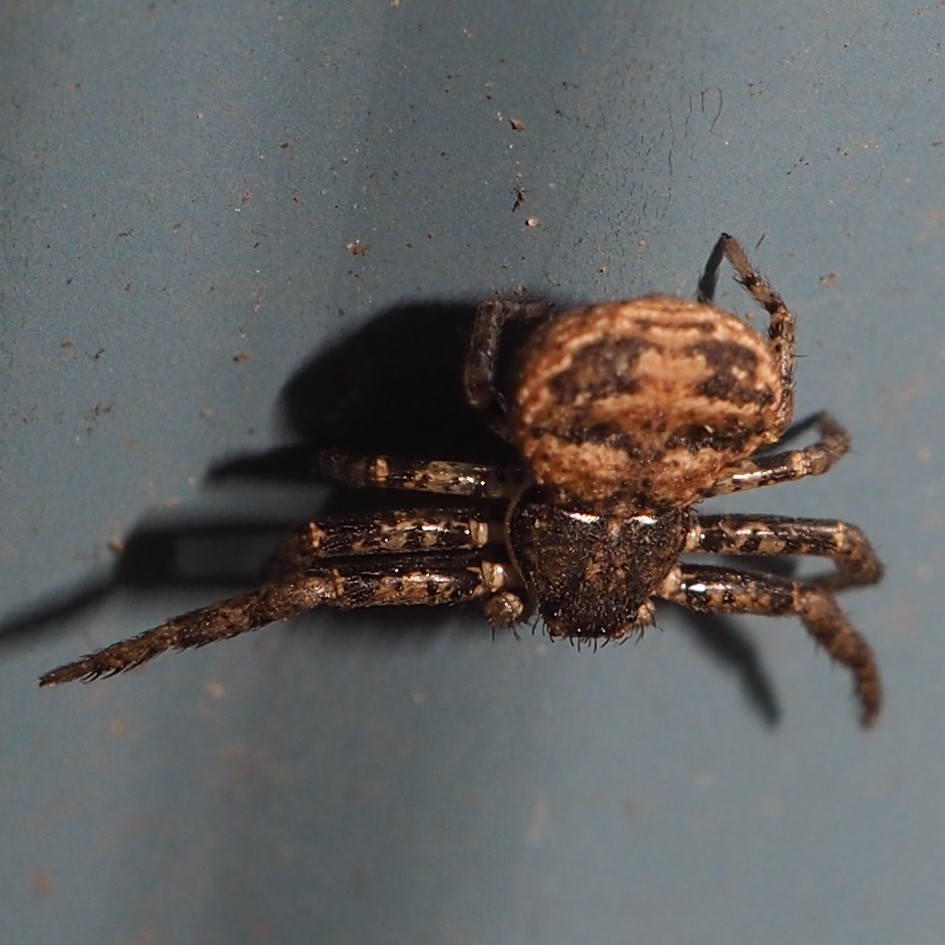
Another member of the family of Crab Spiders is the Running Crab Spider. You can spot it by its long crab arms and its somewhat elongated abdomen.
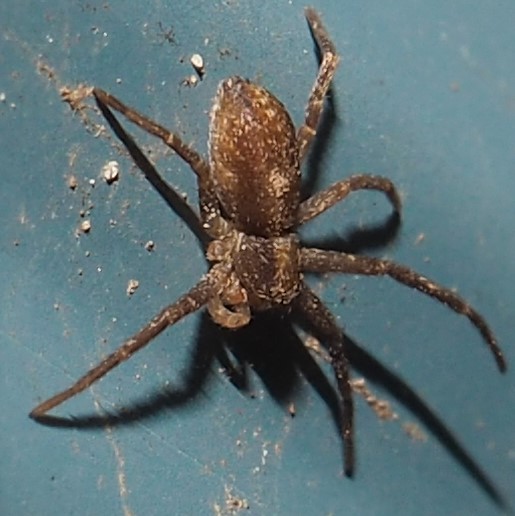
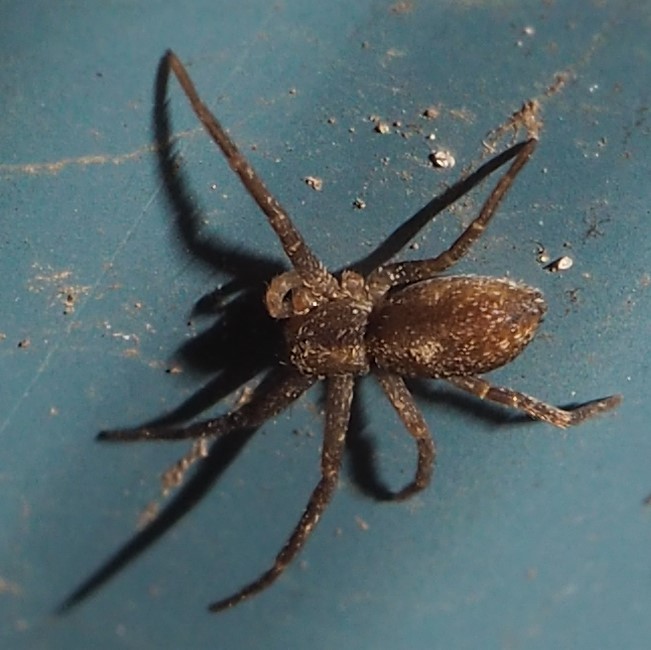
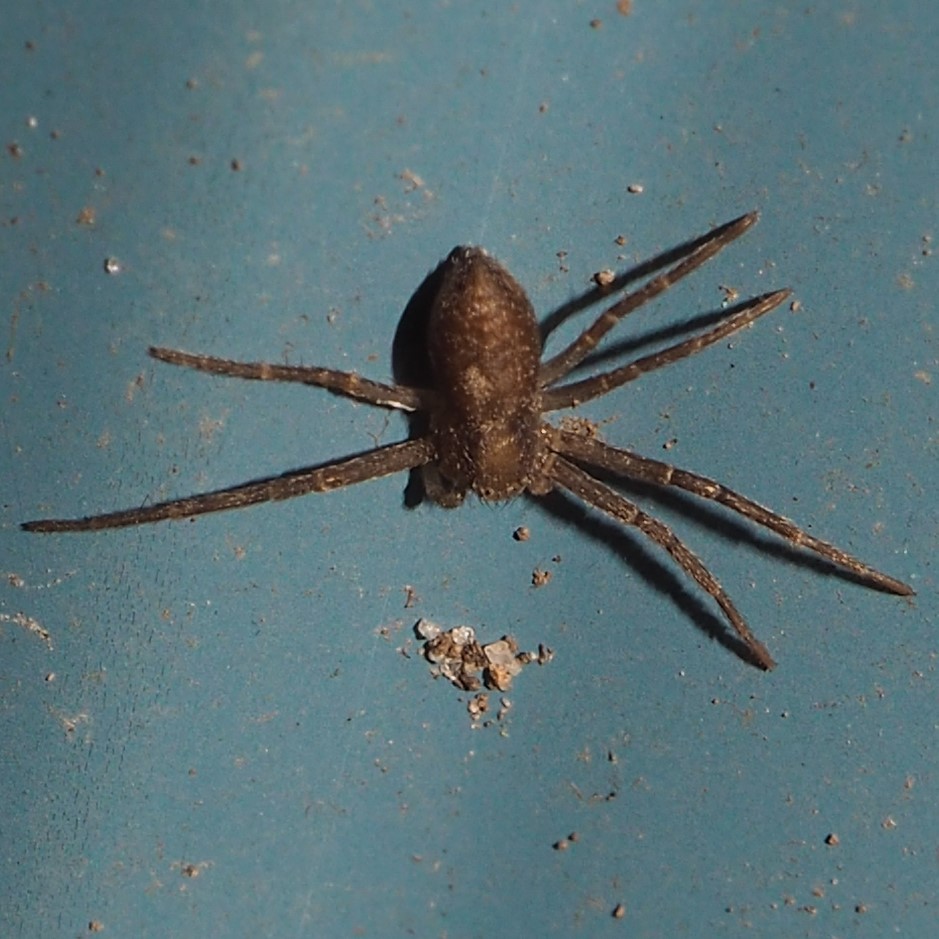
Our faithful Grammonota Dwarf Spider was still around.
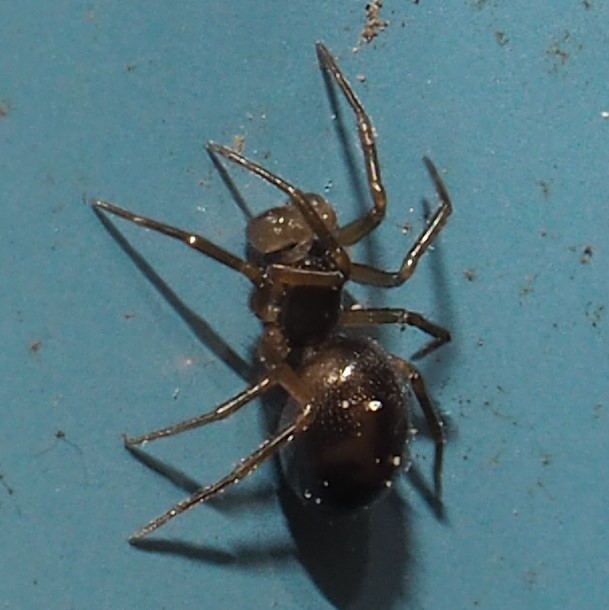
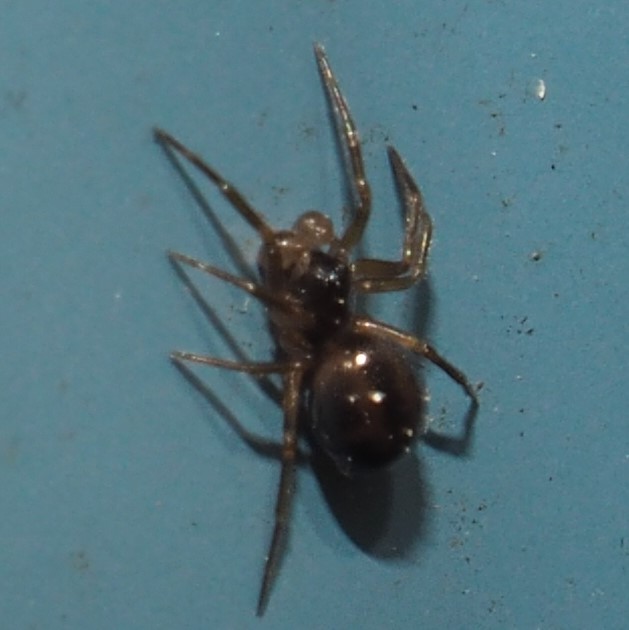

I hope you remember the gorgeous Green Long-jawed Orbweaver we saw so often during the winter. This is in the same genus Tetragnatha. It's clinging to a Bolt in the Wall. Here it is folded into a long stick. It then opens up some and begins to dance around on the Wall.
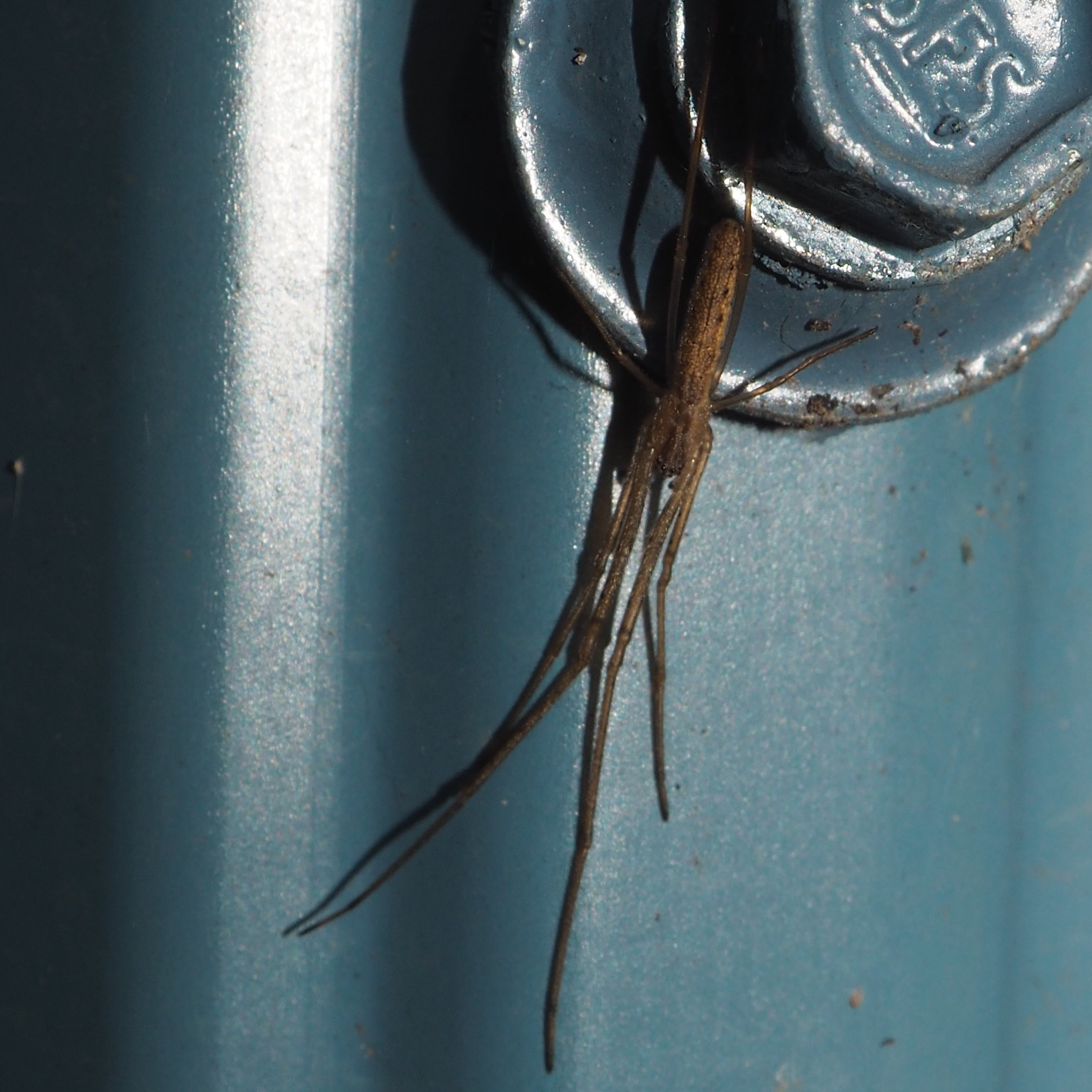

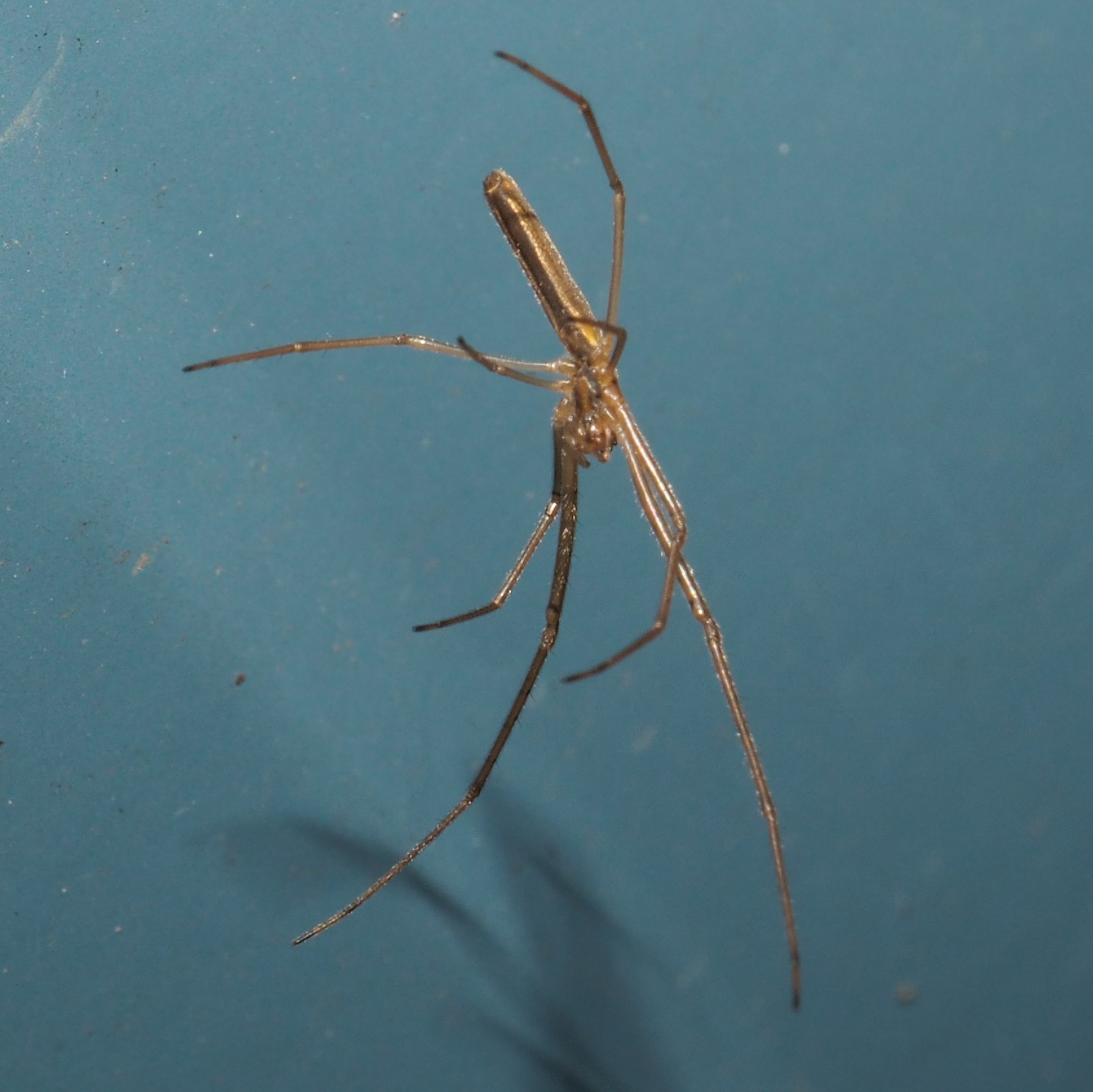
On and on it dances around and finally stretches back out.
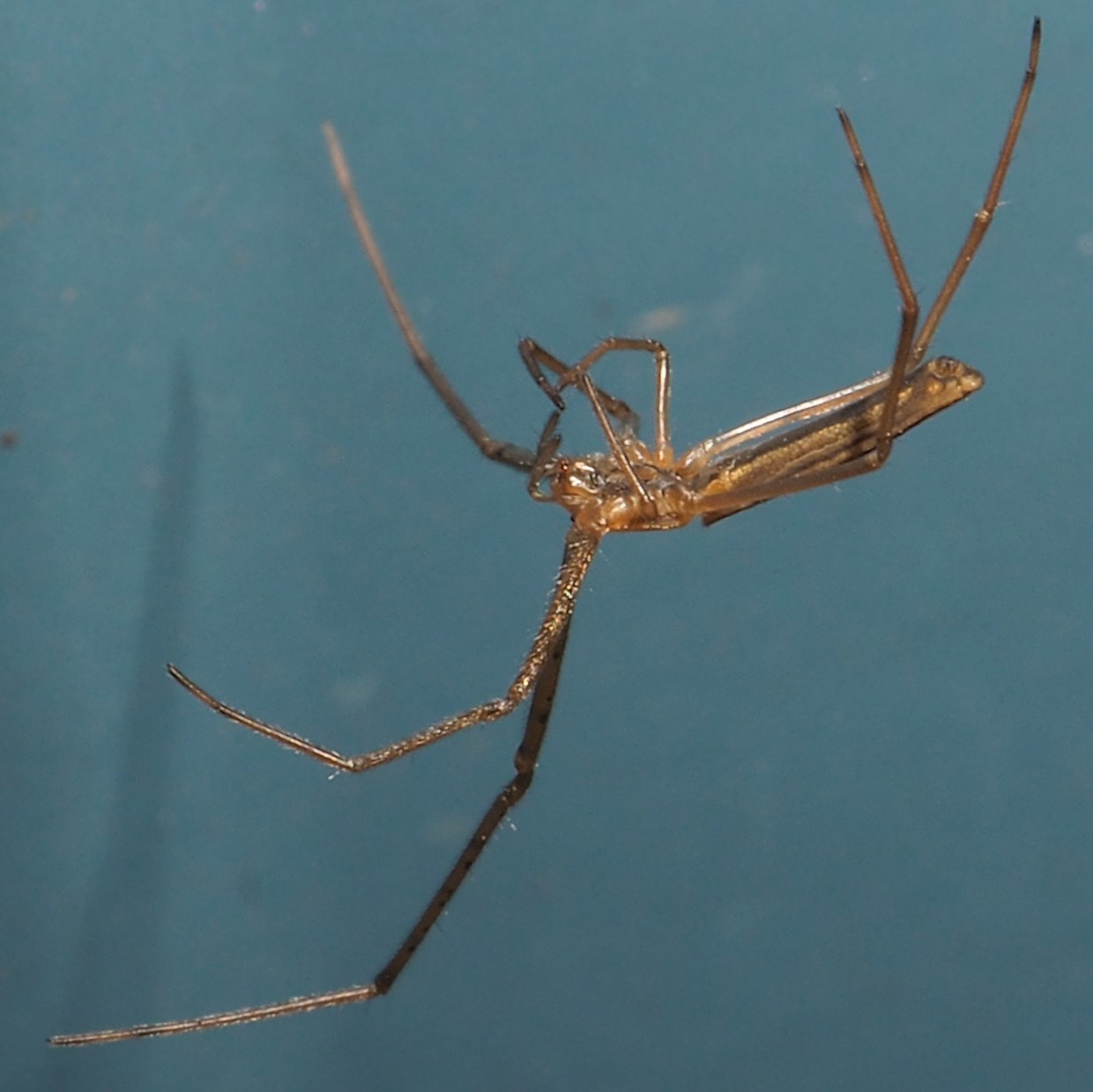
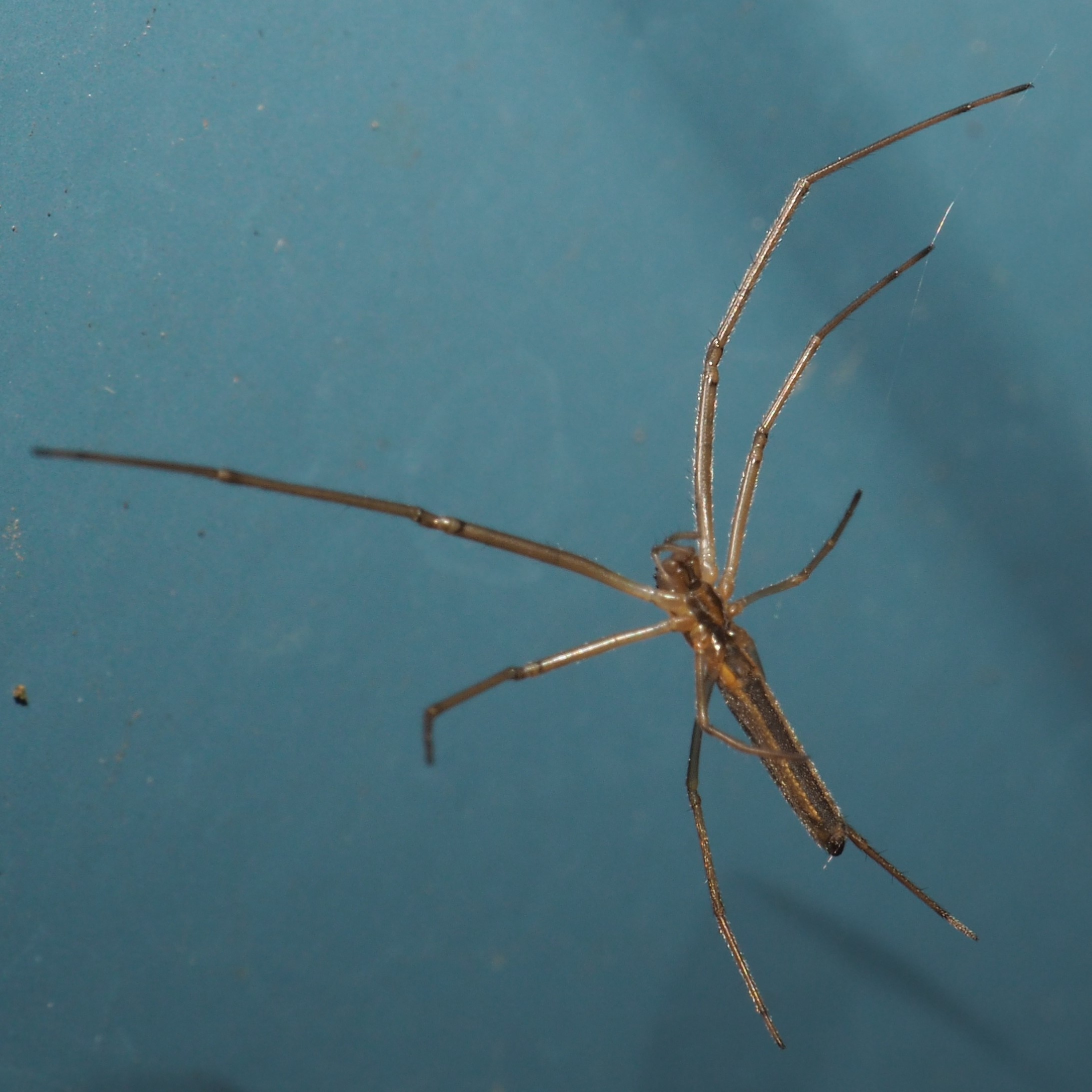
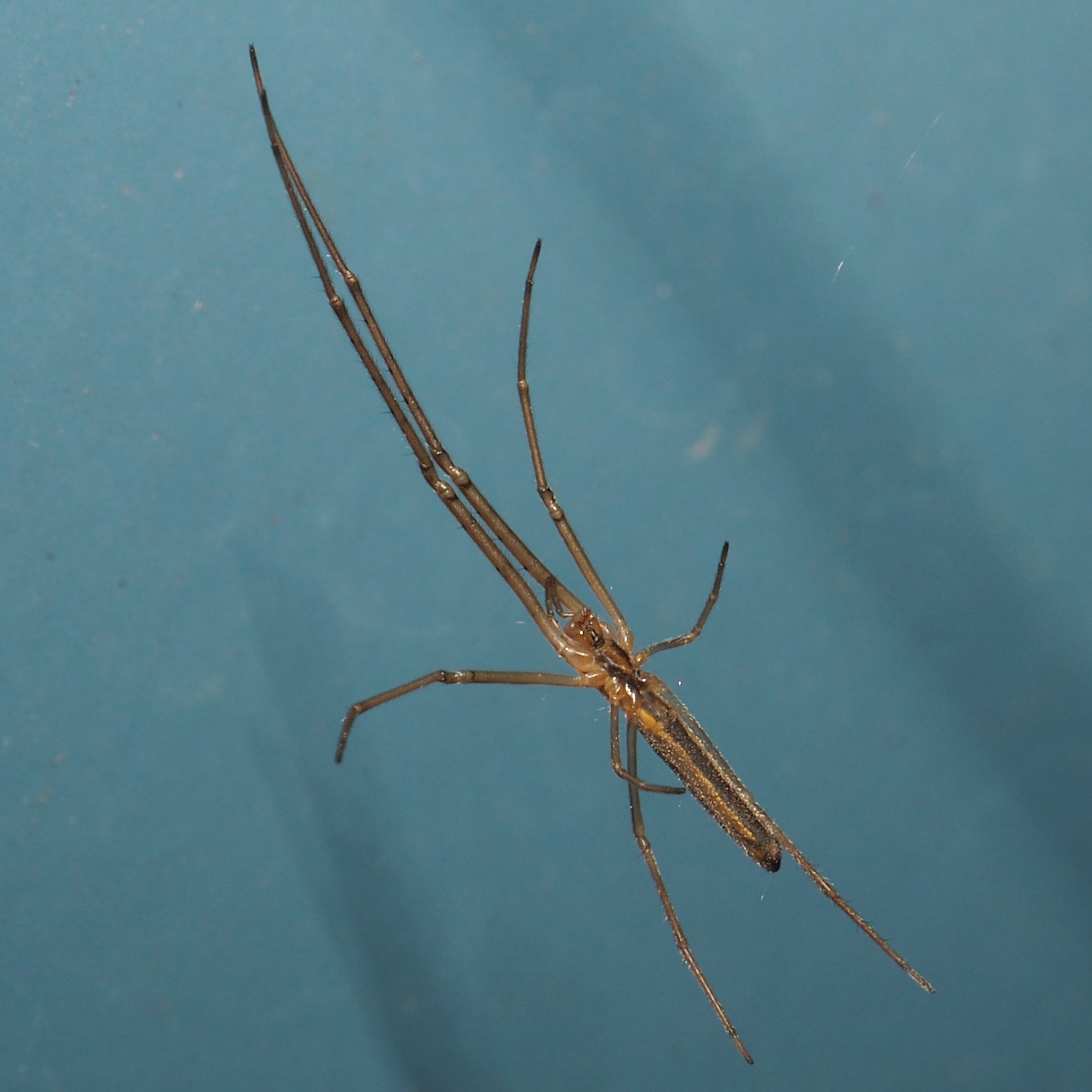
We also had our usual Sheetwebbers.
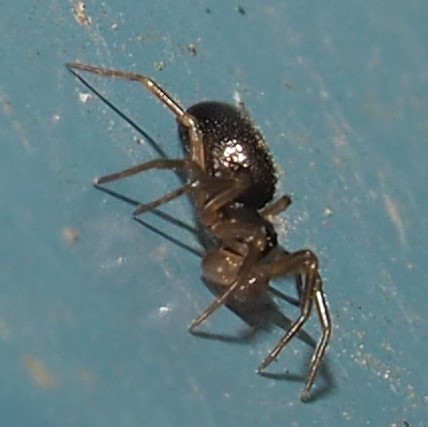

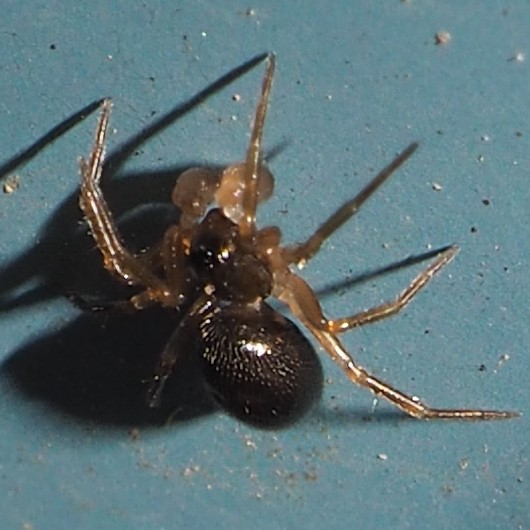
But the star of the week was the Wolf Spiders. Here's a female Thin-legged Wolf Spider. You saw this male last week (image 2). Third is NOT a Thin-legged one (genus Pardosa) but probably either in genus Pirata or Piratula. This diagnosis was made by Jeremy Hussell of iNat. Matt Claghorn also helped me identify most of the spiders, as usual! Thanks Jeremy and Matt!
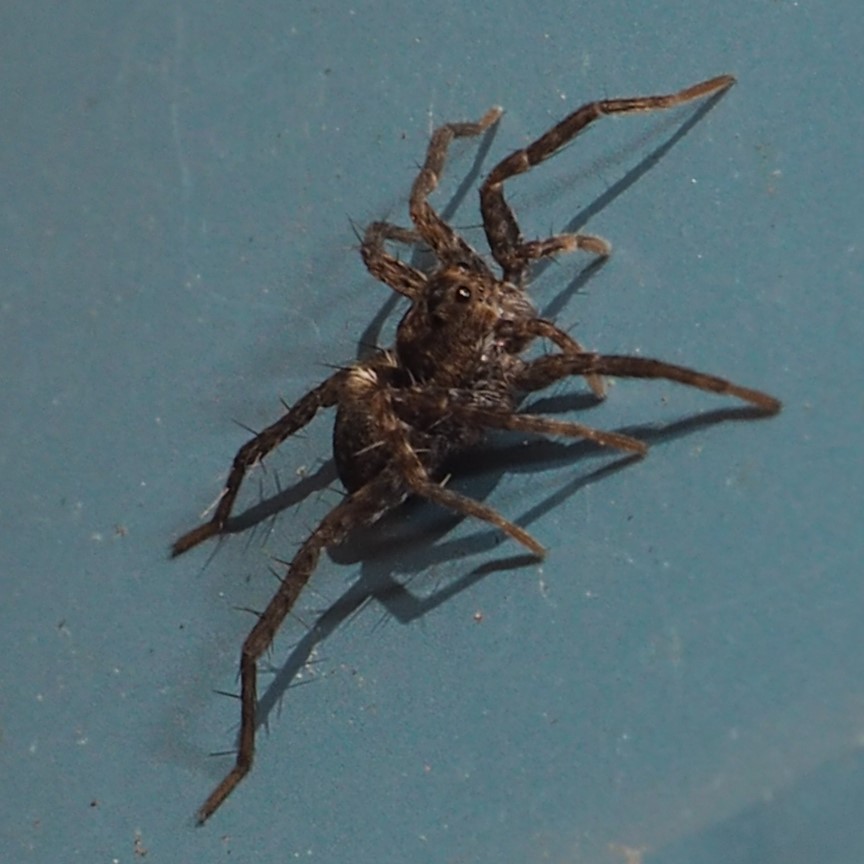
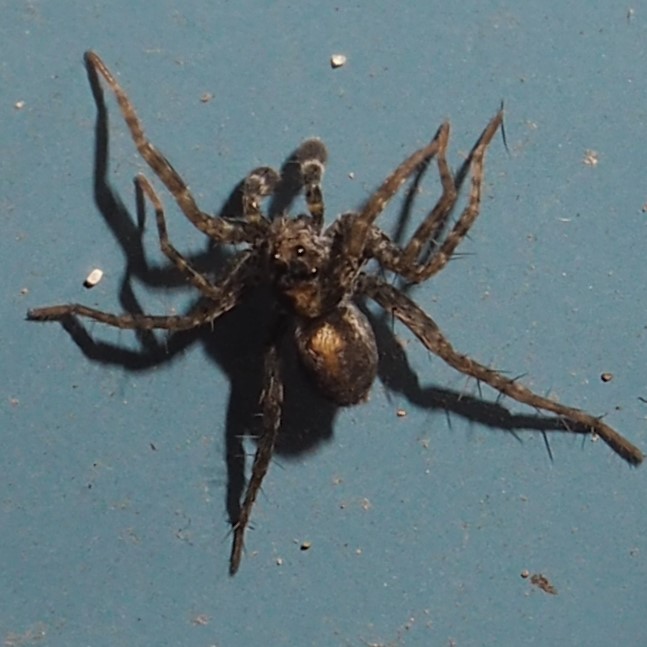
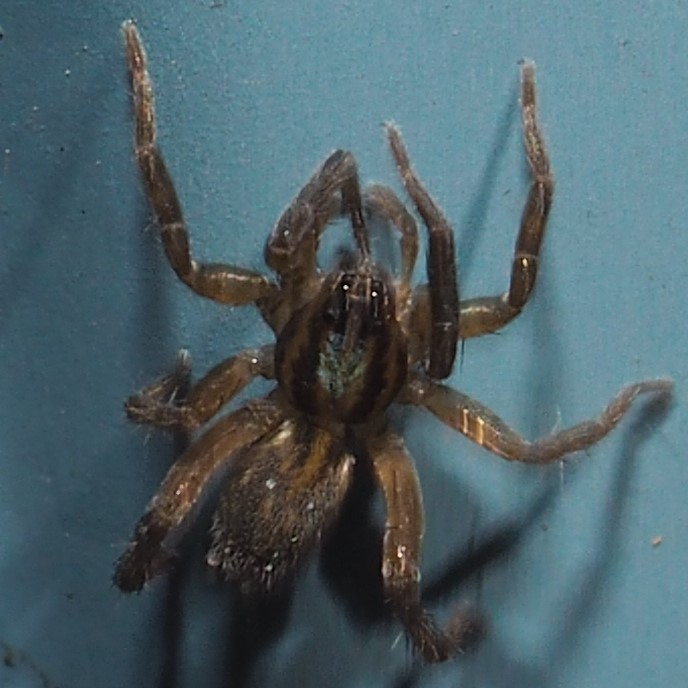
I thought yesterday that I had documented everything for the week. But danged if I didn't wake up at 1 am this morning to see this little Yellow Sac Spider on the wall next to my bed. I jumped out of bed and grabbed my camera and got a few pictures. Then I took a plastic container and piece of cardstock and caught the spider and took it to the bathroom, opened the window, and let her go. I had heard something somewhere about Yellow Sac Spider Bites, and got kind of creeped out when I read this website. Needless to say, it wasn't easy getting back to sleep!
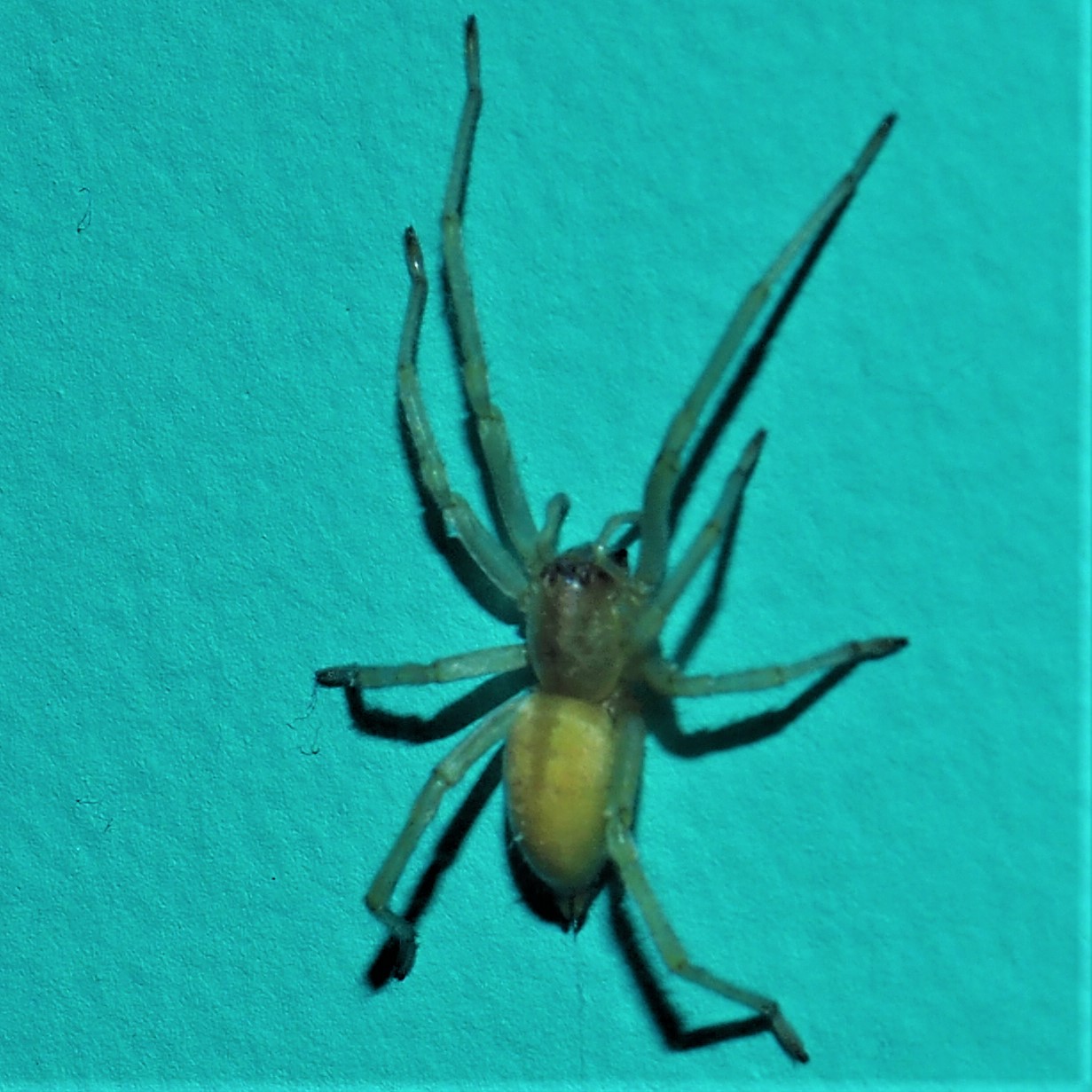
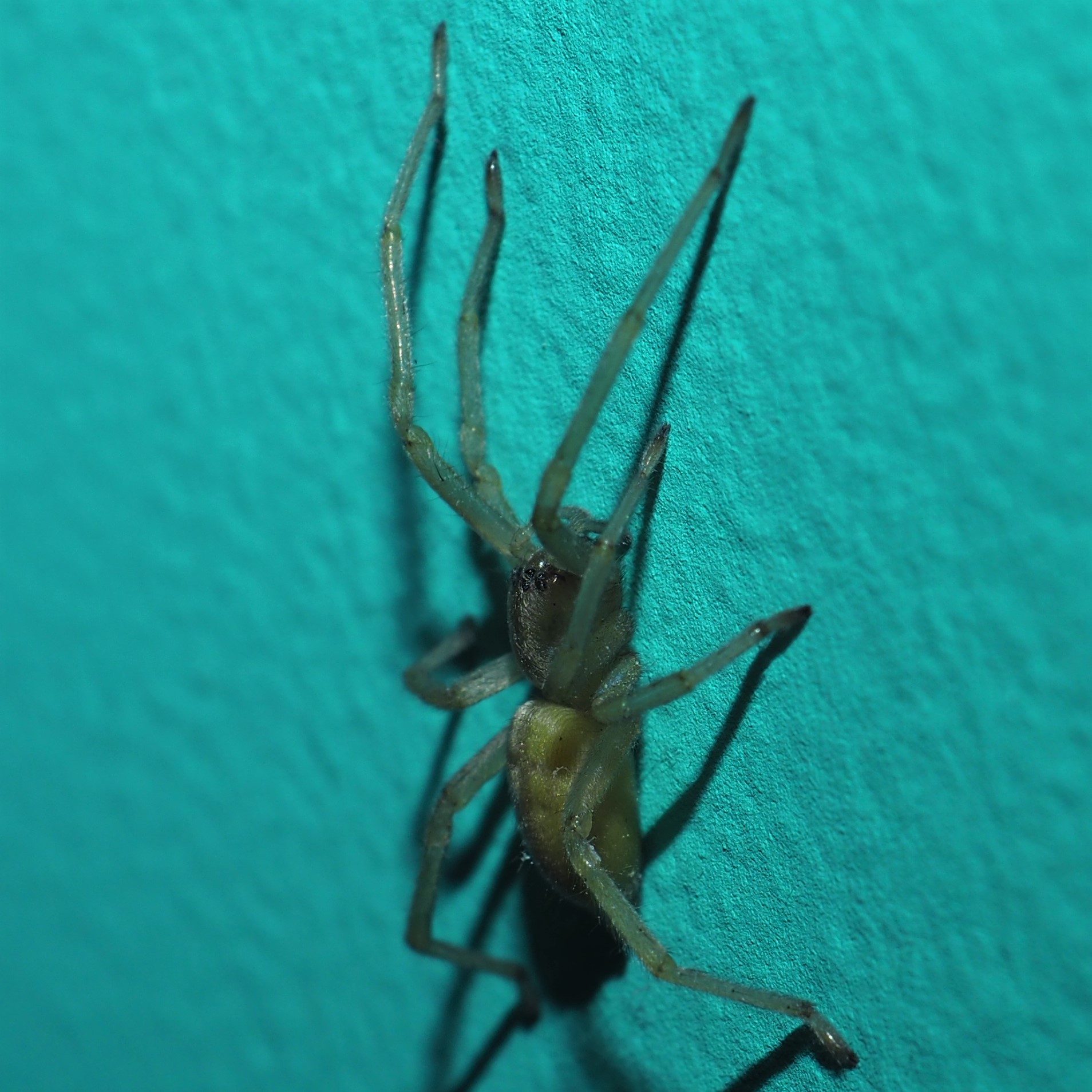
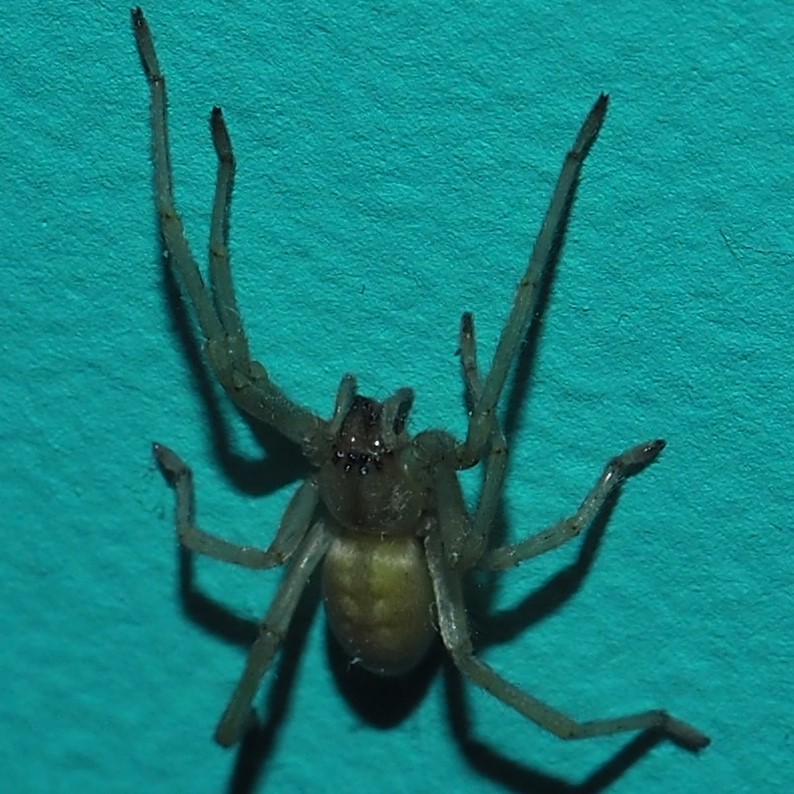
We finish (I think) with a few wasps, mostly Encyrtid Wasps. They tend to be very small and easily mistaken for tiny flies. But the ones I've seen lately have quite a lot of iridescence.
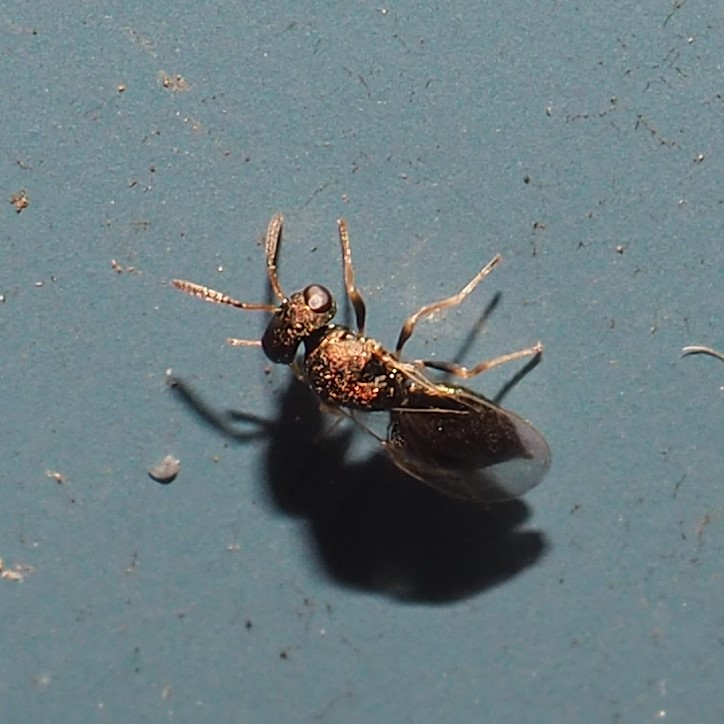
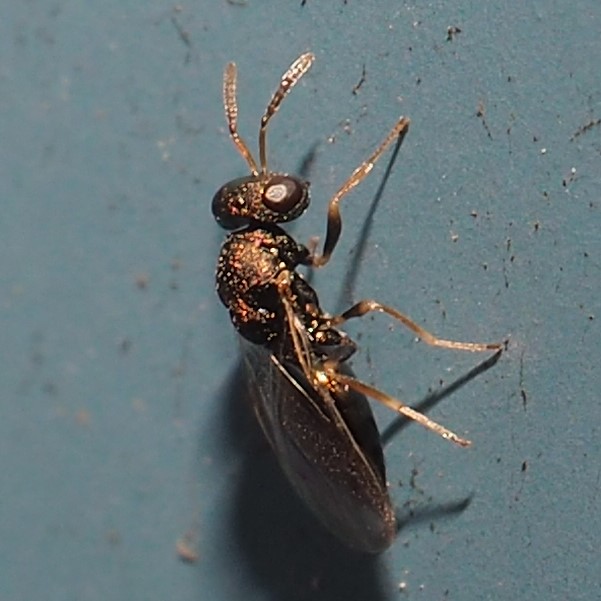
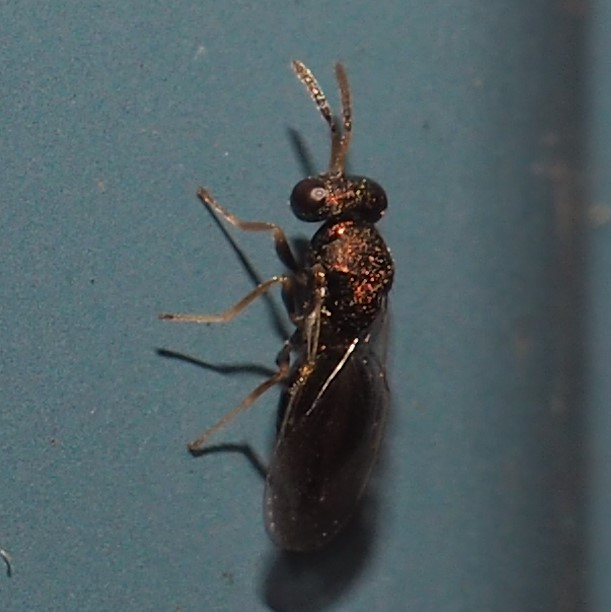
Here's one that always fools me, but I think it's a Diapriid. Sometimes they look like long ants - this one is winged. Diapriid is my best educated guess. The second one is another fooler. It looks like a fly but more like a wasp. Third is a red Ichneumonid that eluded me twice. It seems to like to dance its way up the Wall around 4 pm. The first day I wasn't armed, but the second day I was but by the time I got in range it was dancing very quickly and so I got one picture that still can't get identified beyond Short-tailed Ichneumonid Wasps (Subfamily Ophioninae).
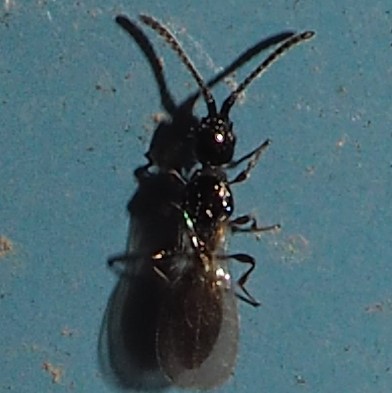
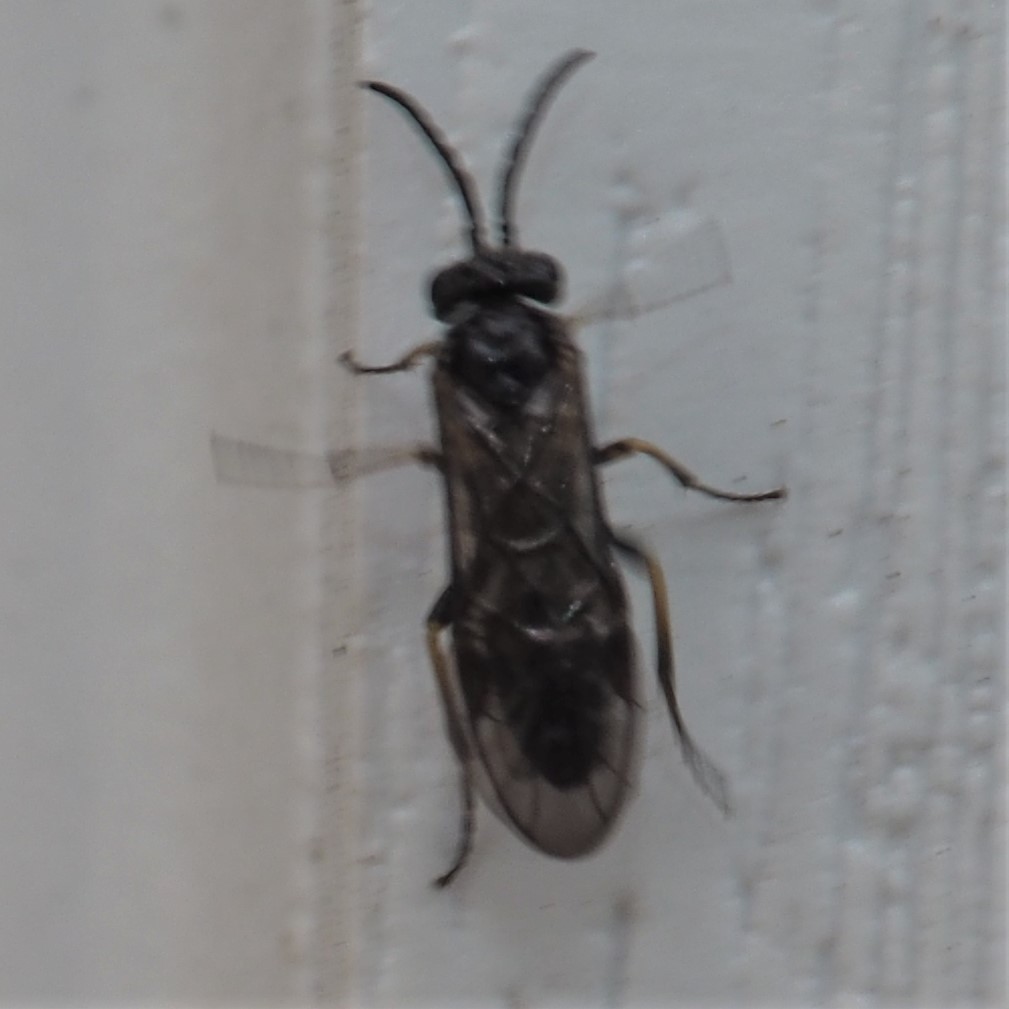
 4 8 20 3.jpg)
A couple of pictures of Tripper. The other day I left the front door open as I was wrangling my walker out of the house and down the front steps.. The next morning I realized that Tripper had not eaten her supper. I slightly wondered why, but it was until I poked my head out the back door to see if it was warm enough to take any pictures that I saw Tripper at the door. She refused to come indoors though. So I packed her food out the door, propped the storm door open and left the inner door open. A short time later she let me bring the food indoors and followed it in. But she was furious as if it had been MY fault she got out. She also was hissing and spitting all the way across the kitchen at Spooky, as if it had been HER fault Tripper was in trouble. Here is a picture of her in Hiss and Spit mode, followed by one the next day in Purring Mode. Anyone want a nice kitty?
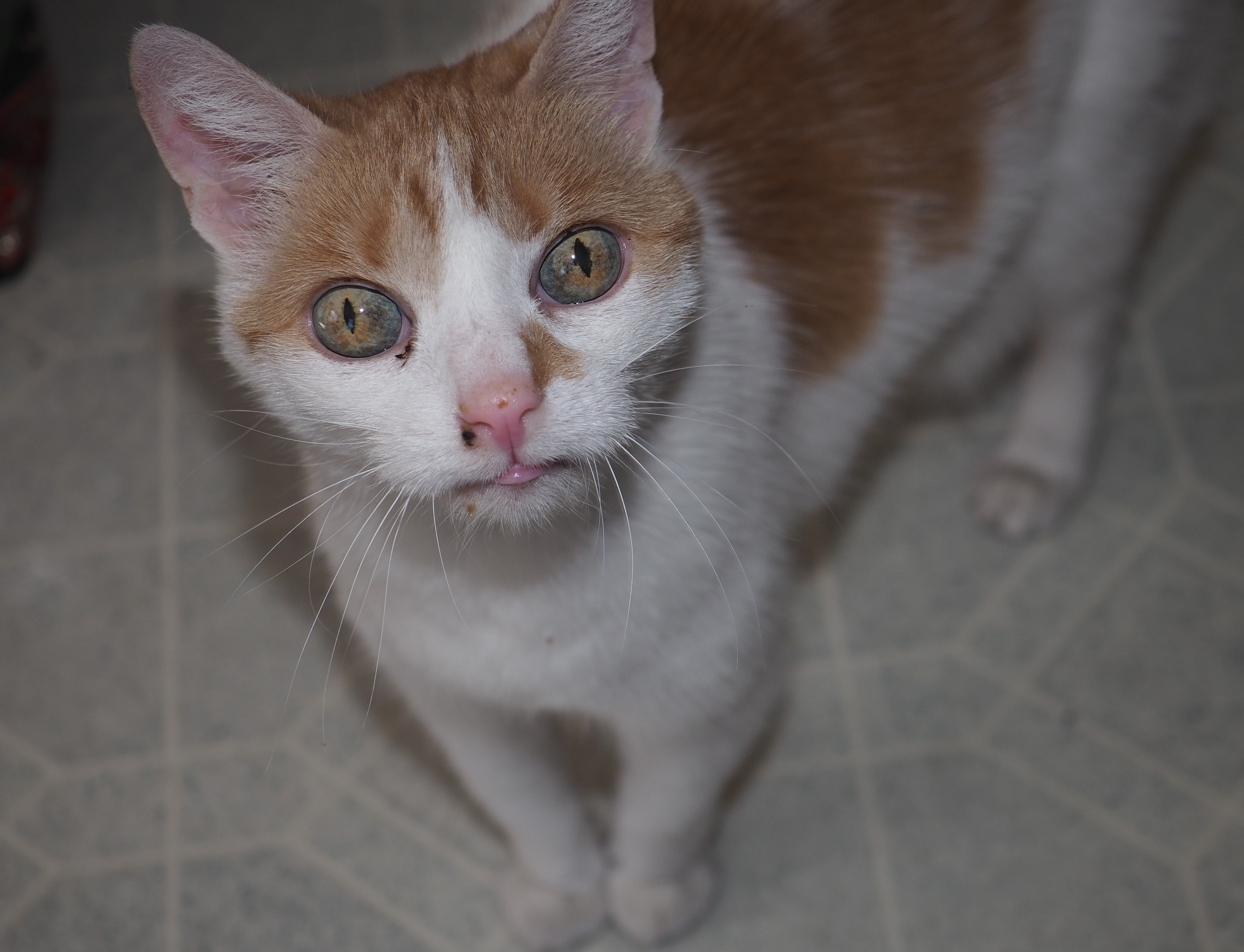
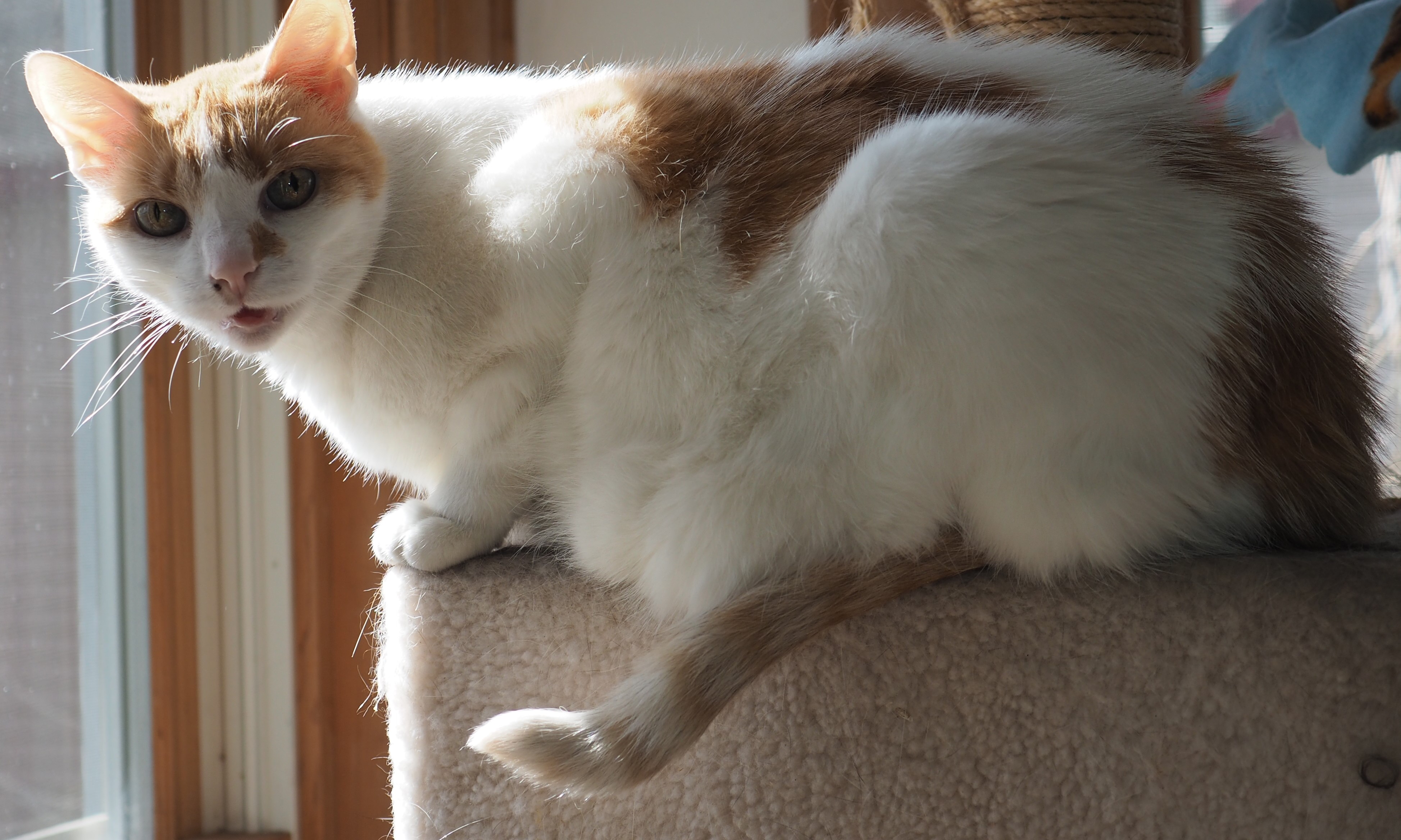
More Morphs. Enjoy and share.
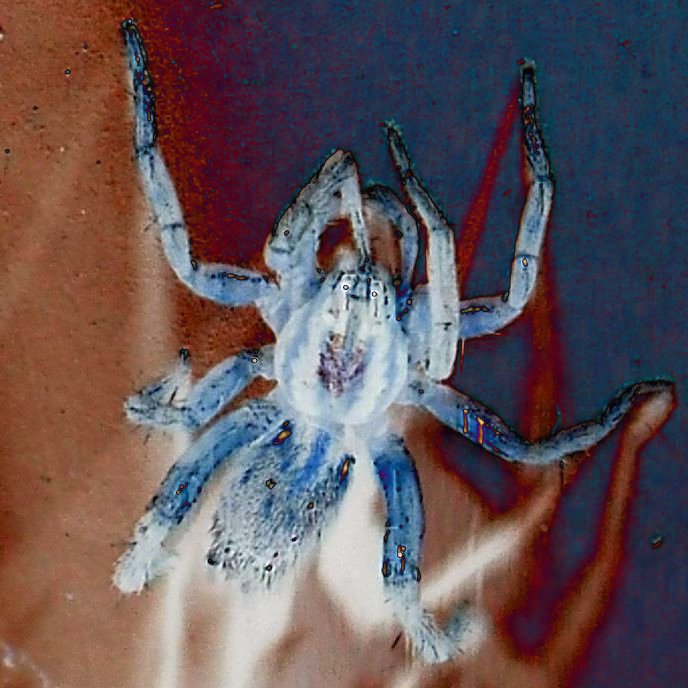
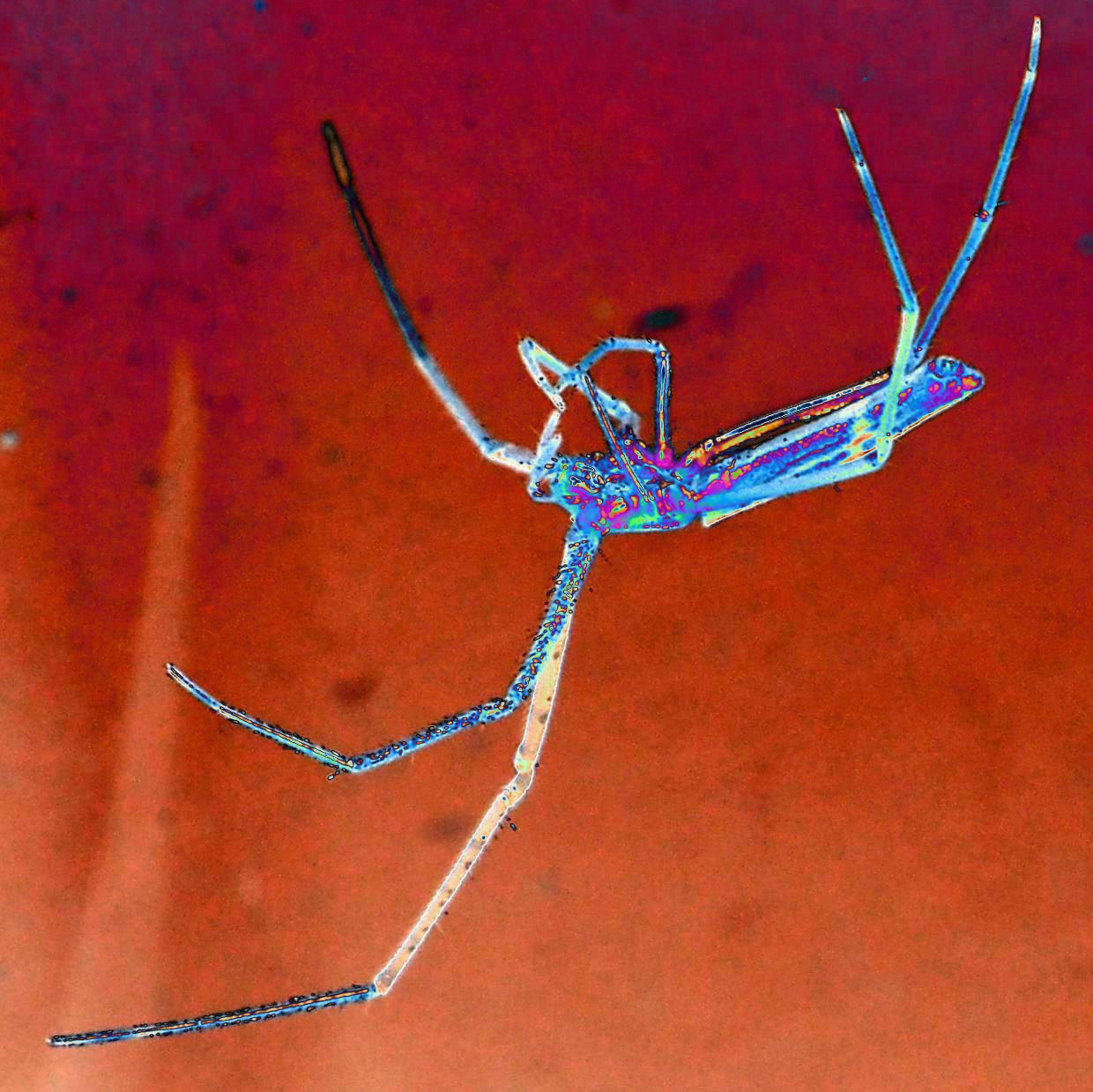
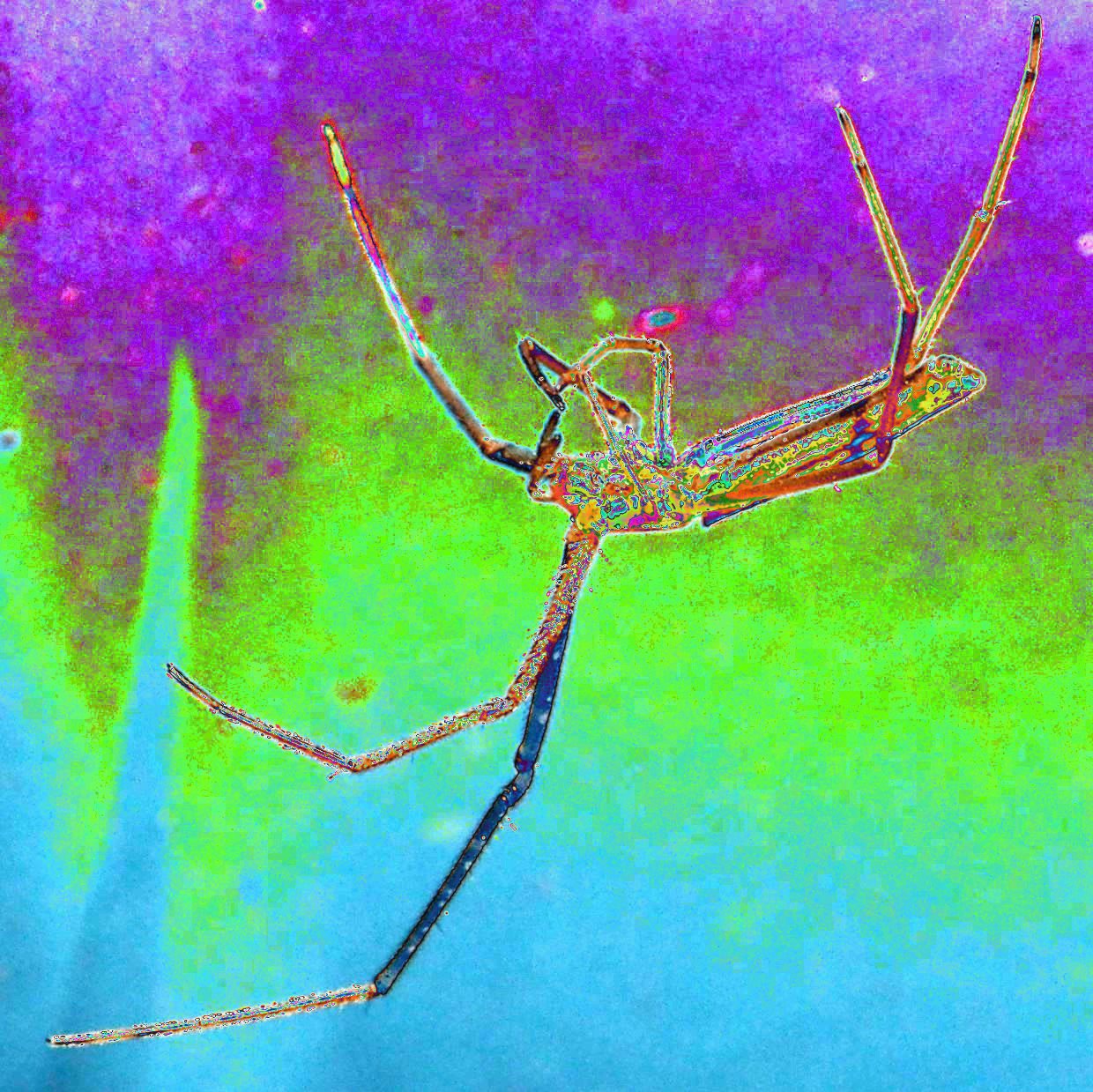
Yet another week. Thanks to all the people who are keeping in touch via email, Zoom, phone, shopping, and just making it clear that we are not really apart. We are still all in this together and hopefully will soon come out at the end of this tunnel with even stronger friendship.
Love, Martha
Back to April 5, 2020
Forward to April 19, 2020
Back to main menu
copyright Martha O'Kennon 2020





















































































































 4 8 20 3.jpg)




